Unpopular history of Moses

Prince of Egypt
Even though much of his history is suppressed a great deal is still known about Moses before he led the Exodus out of Egypt. He was born 1593 BC to Jokebed (wife of Amram greatgreat grandson of Levi) and as a baby he became the adopted son of Pharaohs daughter aBana ahMose.Ancient Egyptian Literature Vol II and his empty mausoleum - tell us much about her son "Admiral" ahMose (aka Moshe) who was assigned to the northern fleet. This took place in the Seventeenth dynasty of Egypt during the Second Intermediate Period. While aBana's son or brother kaMose nominally ruled Thebe's (middle Egypt) the “Hyksos ie. heqa khasut” controlled the north (Nile delta which had it's own king aPophis I who ruled the city of aVaris and memPhis) and the "Princes of Kush" were in command south of Elephantine. At the end of the Second Intermediate Period (mid-sixteenth century BC), Egypt faced the twin existential threats — the "foreign rulers" who were descendants of the old kingdom aka "Joseph" in the North in Memphis and the Kushites in the South in Karima/Meroe - both of which the ahMose family considered to be their subjects. The Seventeenth Dynasty of Egypt is classified as the third dynasty of the Second Intermediate Period of Egypt. The 17th Dynasty dates approximately from the birth of Moses in 1593 BC to his exile in 1553 BC. It was during this time that Moses served as an officer in the Egyptian military following family tradition of his adopted parents.
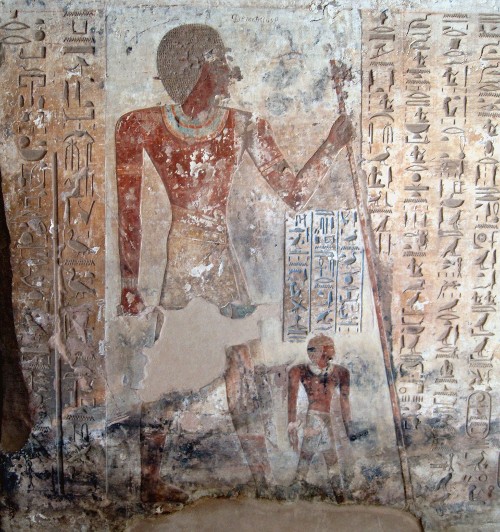
ahMose, adopted son of aBana
Egyptians did not just have odd customs they also had a funny language - a lot like English actually. aBana ahMose aka "Child of the Moon” also known as eBana, iBana, Bathia, Bithiah, Bitya (בִּתְיָה, literally daughter of God) sometimes written as aMosis or aahMes (Josephus calls her Thermuthis) - is a great example how they mangled their words with titles, avatars and concepts. The prepositions like "a", "ah" and "wadj" added before his/her name signified social status and indicated membership of a class of people or things similar to English language definition "a" or "the" moon. If the name included Justified the person was clearly Justified even though not from a "royal" family! Right? If the name included Tao it used to indicate order ie. elder or first. The "Re" or "Ra" added to the name used to indicate membership of a class of deity that they "earned" when they promoted themselves to godhood. As a daughter of Pharaoh seQenen-Re Tao ahMose (sqnj.n-ra mAa-xrw) and seQenen-Re's sister-wife sitDjehuti (and grand-daughter of their father Pharaoh seNakhTen-Re ahMose) - princess eBana ahMoses was a very powerfull and wealthy woman."Mose" is what we nowdays call a familyname. The final "s" on Moses (Hebrew Moshe) comes from Greek which does not allow masculine names to end with a vowel (Yeshua becomes Jesus, Moshe becomes Moses. You will also note that the Hebrew "sh" in both became the Greek "s" as koine Greek does not have the "sh" sound). Her mothers name tells us everything we need to know about her relationship with her adopted son Moses. Everybody (ie. Miriam) kept telling her "he is a gift from the MoonGod" (aBana did not give Moses a hebrew name). Hence the reason why his name did not exist alone but came with her and her family name attached to it. That is why his Mausoleums theme is his mothers relationship with her successfull son. It stands to reason that the Mausoleum was his mothers idea and she was the one who started building it. aBanas father the Pharaoh had three wife's (one of who was his sister) and many children. "Moshe's" tale barely mentions his adopted father Baba who apparently died young which would explain (widow) iBana's desire to adopt the boy she named Moses after her royal family line. (Note the changed prefix ie. social status.) Perhaps Baba was murdered by a member of his own family who considered him a threat to succession. That is why Moses is called a Crew Commander here. (Not a King or Pharaoh. Yet. Originally, pharaoh | par-‘o meant “Great House,” and was a term for the palace of the king before it came to represent the king himself.) That is why his name here is always connected to his adopted mother. Moses was not in the line of succession so he was not considered a threat to anyone in the ahMoses family. Not until much later. Bana & Baba (son of Re-Onet) were both royalty and as such their family expected their sons to serve in the military. And so Moses did ("After I had established a household").
He started as an officer on his fathers boat and quickly rose to command the northern fleet. "I became a soldier in his stead on the ship “The Wild Bull” in the time of the Lord of the Two Lands, nebPehti-Re, the justified." Moses implies that "his Lord" at the time - nebPehti-Re ruled both upper and lower Egypt. Still those pesky "Northern Nomads" did not seem to learn their place and he was often sent to teach them manners. In the early campaigns against the Hyksos in the north he fought beside the Pharaoh himself and quickly gained great fame and wealth. After seQenen-Re died (from an axe wound in the head) his "son" wadj-khePerre ka-Mose became the "ruler" of Egypt. ka-Mose continued to drive north extending the ah-Moses family rule further north. When aBana's "brother" ka-Mose "died" only few years later his three mothers (ah-Mose-Inhapi, ahHotep I and Sit-Djehuti) ruled as co-re´gents waiting for "ah-Mose I" to became of age and become the next Pharaoh of Thebes. (It was at this turbulent time why these "Three Queens" son's and later husbands like "nebPehti-Re ahMose I the Justified" were also considered Pharaohs and one of the reasons why their family-lines get so confusing. One of them apparently married her son.) This is how you end up with 3 Pharaohs and 3 Queens ruling at the same time in different city states. This is how Moses's Grandmother Sit-Djehuti continued to rule as co-reagent and the war against the "Hyksos" became less important compared to internal power strugles of ahMose family. Pharaohs were dropping dead like flies and new ones were temporarily promoted to keep the "peace". After "ahMose I" begun his rule at the age of ~10 he (or more likely his mother) escalated the border war with "foreing intruders" aka Sons of Israel who had not lived there as long as the ahMose royal family.
Missing Momies
This is the "official" story. Only it makes little sense.There are too many leaders called ??Mose?? who apparently all lived at the same time with too many problems with their "missing momies" to take "official" narrative seriously.
Whether or not wadje(t)-Mose, a-Mose, ah-Mose, amen-Mose, tuth-Mose, ka-Mose and ra-Mose were the same person remains unclear. (Wadjet represented "lower" or "lesser" and was the name of a sister city to Nekheb - city "lower" down Nile where ah-Mose the "taller" Moses said he grew up.) ALL-Mose's are credited identical heroic action, amazing construction projects (like inventing glass) and they all seem to have "missing body" that later "might have accidentally" been found lying around somewhere then destroyed but moved because "...insert your favourite theory here!" All have a pyramid or a tomb. All are vandalized or destroyed (like the very last pyramid ever built) and were found empty.
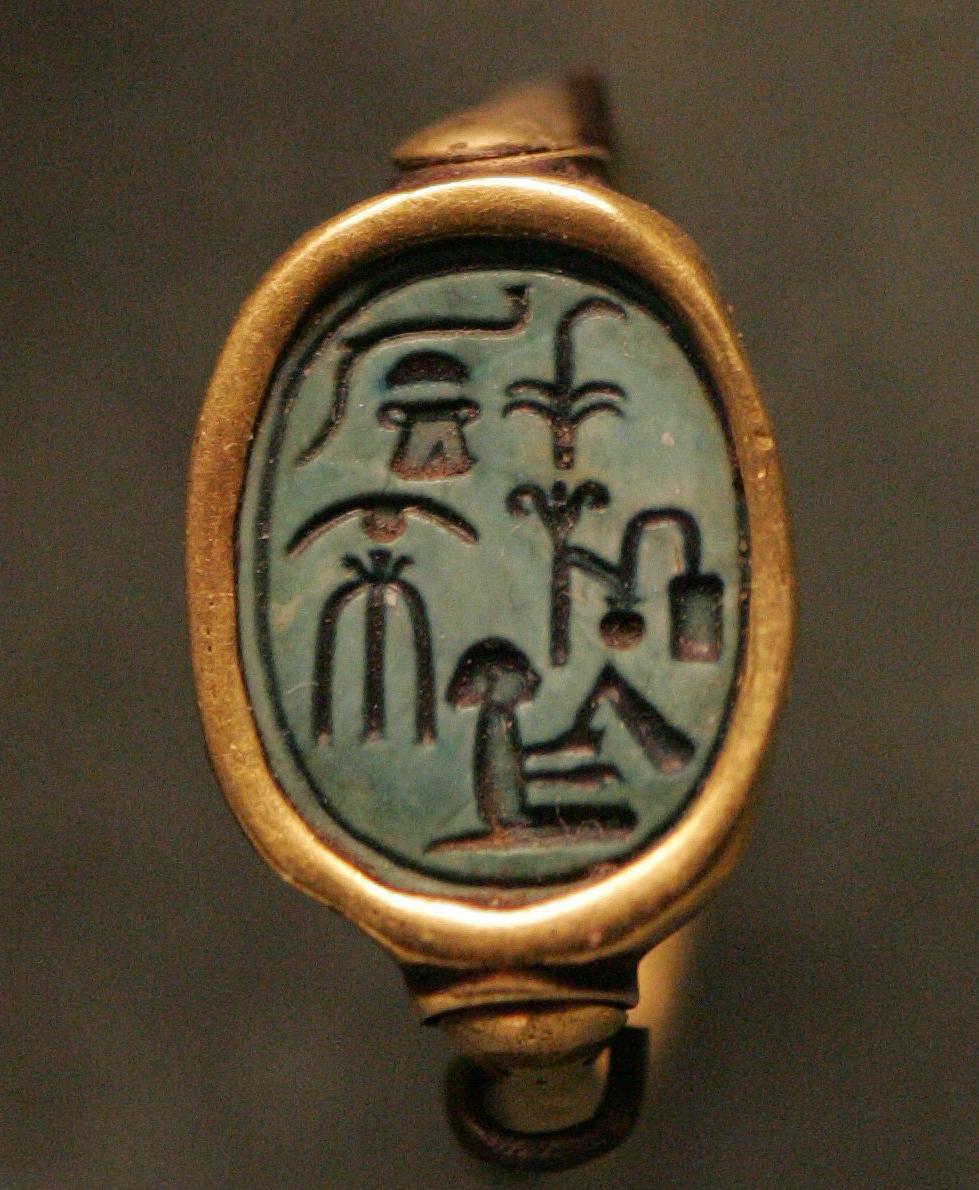
The mummy of ka-Mose is mentioned in the Abbott Papyrus, which records an investigation into tomb vandalism (
(Seal ring. The King's Scribe, Overseer of the Harem, AhMose. The-Noble Man.)
The coffin remains in Egypt, while the dagger is in Brussels and the pectoral and mirror are in the Louvre, Paris. The name of the pharaoh inscribed on the coffin was only recognized fifty years after the original discovery, by which time the mummy, which had been left with the pile of debris on which it was found, was "almost" certainly long lost.
Take a good look at these last few paragraphs. I see red. Lots of red. If you believe this - I have a "good" friend who would like to sell you a bridge in Brooklyn. It's a good deal.
Egyptian texts (Speos Artemidos Inscription of Hatshepsut) continued to malign the Hyksos. They were also mocked in literary tales like the Tale of aPepi and seQenen-Re. The goal of these tales seems to be the legitimization of less secure Egyptian reigns. Moses spent most of his military life as a "sailor" in his uncles "army". (River Nile dominated everything and in those days there was no real difference between army and navy.) He fought at aVaris, Sharuhen (in Palestine) and Nubia (in Kush) in the service of his "uncle" kaMose, King djeSerka-Re the justified, King aakHePerka-Re, the justified, and tuthMose I. There appears to be great deal of confusion regarding the ahMose line because some people prefer clear propaganda over bible records. Eventually most of the Mose line perished with the Pharaoh at "REED SEA" (Red Sea had not been "invented" yet by Jews) and no pyramids/tombs were built above ground anymore. There were no slaves left to build them. A new way to bury the royalty was needed and so the "Valley of the Kings" on the Nile's west bank near Luxor became the burial sites of the new line of Pharaohs. Moses received many honors for his bravery in battle which were chiseled on the wall of his Pyramid and Mausoleums but as usual the ruling families had a tendency to re-write history when it suited them. (In those days tombs were made long before you actually died. Why waste a perfectly good empty "apartment" so some people even lived in them.) According to "PaHeRy", "a relative" of Moses and a scribe and priest(es) of the goddess Nekhbet and tutor to the prince Wadj-Mose, "she/he" "supervised" the building of this tomb.
(Mummy of the ancient Egyptian princess ahMose)
The Crew Commander ahMose son of aBana "the justified" says.
The Mausoleum of ahMose reveals us a lot about Moses's life before exile. … "the crew commander, ahMose, son of aBana, justified, and his wife, the mistress of house, iPu … who makes their name live, the scribe HeRy-iRy Justified" (aRon?) and "Receiving all good thing by the crew commander, ahMose, son of aBana, his wife, the mistress of house, iPu Justified". Very noticeable is the absence of the Kheker Frieze above the inscription usually found at the top of ancient Egyptian walls."Now after his Majesty had slain the "Bedoin of aSia" (translation: after Moses finally crushed the Hebrews at the 3rd battle of Hyksos at Nile delta on behalf of the Pharaoh), he sailed upstream (south) to Upper Nubia to destroy the Nubian bowmen." The tomb writings contain two other references to the Nubian bowmen of Kush. This turned out to be significant later in Moses's life.
"I speak to you, all people. I let you know what favors came to me. I have been rewarded with gold seven times in the sight of the whole land, with male and female slaves as well. I have been endowed with very many fields. The name of the brave man is in what he has done; it will not perish in the land forever."
"I grew up in the town of Nekheb, my father being a soldier of the King of Upper and Lower Egypt, seQenen-Re, the justified. Baba son of Re-Inet was his name. I became a soldier in his stead on the ship “The Wild Bull” in the time of the Lord of the Two Lands, nebPehti-Re Justified. I was a young man, before I had married, and I slept in a hammock of net."
 "Now when I had established a household, I was taken to the ship “Northern”, because I was brave. I followed the sovereign on foot when he rode about on his chariot. When the town of aVaris was besieged, I fought bravely on foot in his majesty’s presence. Thereupon I was appointed to the ship “Rising in Memphis.” Then there was fighting on the water in “Pjedku” of aVaris. I made a seizure and carried off a hand. When it was reported to the royal herald the gold of valour was given to me. Then they fought again in this place; I again made a seizure there and carried off a hand. Then I was given the gold of valour once again."
"Now when I had established a household, I was taken to the ship “Northern”, because I was brave. I followed the sovereign on foot when he rode about on his chariot. When the town of aVaris was besieged, I fought bravely on foot in his majesty’s presence. Thereupon I was appointed to the ship “Rising in Memphis.” Then there was fighting on the water in “Pjedku” of aVaris. I made a seizure and carried off a hand. When it was reported to the royal herald the gold of valour was given to me. Then they fought again in this place; I again made a seizure there and carried off a hand. Then I was given the gold of valour once again.""Then there was fighting in Egypt to the south of this town, and I carried off a man as a living captive. I went down into the water - for he was captured on the city side - and crossed the water carrying him. When it was reported to the royal herald I was rewarded with gold once more. Then aVaris was despoiled, and I brought spoil from there: one man, three women; total, four persons. His majesty gave them to me as slaves. Then Sharahen was besieged for three years. His majesty despoiled it and I brought spoil from it: two women and a hand. Then the gold of valour was given me, and my captives were given to me as slaves."
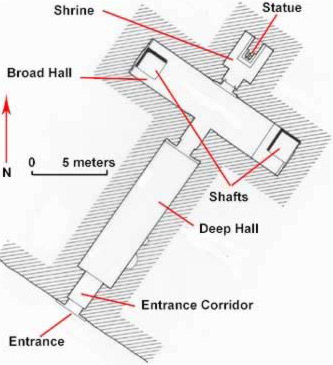 "Now when his majesty had slain the "nomads of aSia", he sailed south to Khent-hen-nefer, to destroy the Nubian Bowmen. His majesty made a great slaughter among them, and I brought spoil from there: two living men and three hands. Then I was rewarded with gold once again, and two female slaves were given to me. His majesty journeyed north, his heart rejoicing in valour and victory. He had conquered southerners, northerners."
"Now when his majesty had slain the "nomads of aSia", he sailed south to Khent-hen-nefer, to destroy the Nubian Bowmen. His majesty made a great slaughter among them, and I brought spoil from there: two living men and three hands. Then I was rewarded with gold once again, and two female slaves were given to me. His majesty journeyed north, his heart rejoicing in valour and victory. He had conquered southerners, northerners.""Then Aata came to the South. His fate brought on his doom. The gods of Upper Egypt grasped him. He was found by his majesty at Tent-taa. His majesty carried him off as a living captive, and all his people as booty. I brought two young warriors as captives from the ship of Aata. Then I was given five persons and portions of land amounting to five aRurae in my town. The same was done for the whole crew. Then came that foe named Tetian. He had gathered the malcontents to himself. His majesty slew him; his troop was wiped out. Then I was given three persons and five arurae of land in my town."
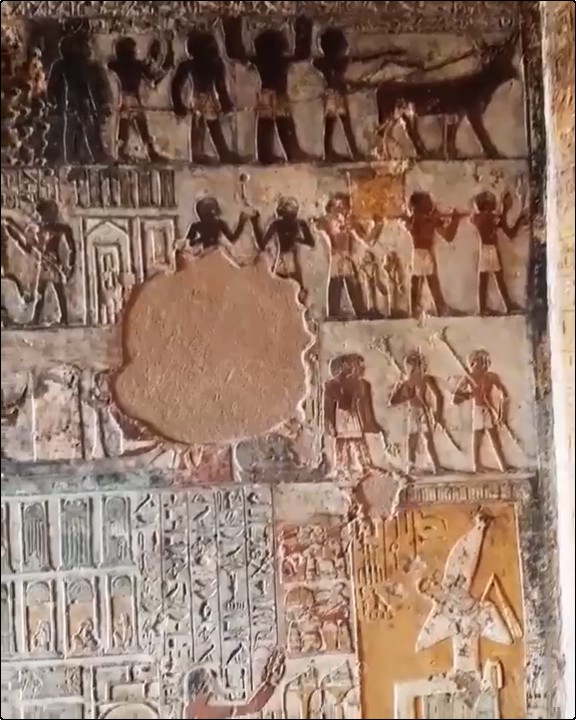 "Then I conveyed King djeSerka-Re, the justified, when he sailed south to Kush, to enlarge the borders of Egypt. His majesty smote that Nubian Bowman in the midst of his army. They were carried off in fetters, none missing, the fleeing destroyed as if they had never been. Now I was in the van of our troops and I fought really well. His majesty saw my valour. I carried off two hands and presented them to his majesty. Then his people and his cattle were pursued, and I carried off a living captive and presented him to his majesty. I brought his majesty back to Egypt in two days from “Upper Well,” and was rewarded with gold. I brought back two female slaves as booty, apart from those that I had presented to his majesty. Then they made me a “Warrior of the Ruler.”
"Then I conveyed King djeSerka-Re, the justified, when he sailed south to Kush, to enlarge the borders of Egypt. His majesty smote that Nubian Bowman in the midst of his army. They were carried off in fetters, none missing, the fleeing destroyed as if they had never been. Now I was in the van of our troops and I fought really well. His majesty saw my valour. I carried off two hands and presented them to his majesty. Then his people and his cattle were pursued, and I carried off a living captive and presented him to his majesty. I brought his majesty back to Egypt in two days from “Upper Well,” and was rewarded with gold. I brought back two female slaves as booty, apart from those that I had presented to his majesty. Then they made me a “Warrior of the Ruler.”"Then I conveyed King aakHePerka-Re, the justified, when he sailed south to Khent-hen-nefer, to crush rebellion throughout the lands, to repel the intruders from the desert region. I was brave in his presence in the bad water, in the towing of the ship over the cataract. Thereupon I was made crew commander. Then his majesty was informed that the Nubian ... At this his majesty became enraged like a leopard. His majesty shot, and his first arrow pierced the chest of that foe. Then those enemies turned to flee, helpless before his Uraeus. A slaughter was made among them; their dependents were carried off as living captives. His majesty journeyed north, all foreign lands in his grasp, and that wretched Nubian Bowman head downward at the bow of his majesty’s ship “Falcon.” They landed at Ipet-sut."
"After this (his majesty) proceeded to Retjenu, to vent his wrath throughout the lands. When his majesty reached Nahrin, his majesty found that foe marshalling troops. Then his majesty made a great slaughter of them. Countless were the living captives which his majesty brought back from his victories. Now I was in the vanguard of our troops, and his majesty saw my valour. I brought a chariot, its horse, and him who was on it as a living captive. When they were presented to his majesty, I was rewarded with gold once again.
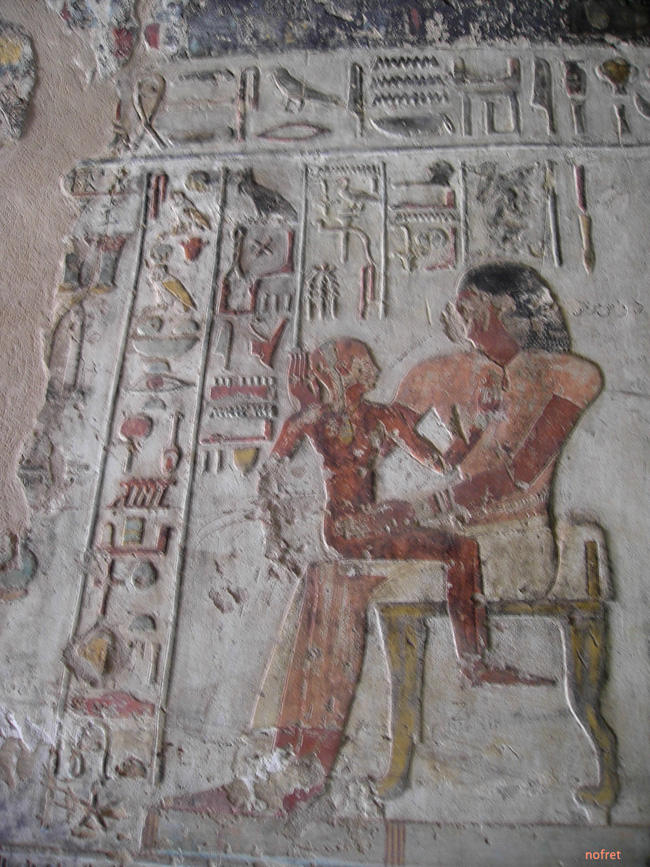 I have grown old and reached old age. Favoured as before, and loved by my lord, I 'rest' in the tomb that I myself made."
I have grown old and reached old age. Favoured as before, and loved by my lord, I 'rest' in the tomb that I myself made."... and yet, ahMose himself was not buried in this tomb, despite the fact that all the canons of the tomb, including the funeral pit in a small cell in the western wall, were created.
That last sentence of ahMoses's story was clearly added there afterwards by somebody else. Shame to waste such a nice tomb with such a heroic tale and then leave it empty. "Grandson" of Moses clearly takes some artistic liberties there at the end with his grandfathers tomb to finish the tale in a manner that was acceptable to the defeated Egyptians rather than calling his grandfather a traitor and a murderer after Moses was forced to flee from Egypt and Pharaohs army was crushed at REED SEA. The mere mention of ahMoses grandson in ahMoses's unfinished tomb should raise alarms on any one capable of critical thinking. The picture here is often misleadingly depicted of showing PaHeRy holding the future Pharaoh Wadj-Mose in his lap. Only problem is... this is not from "Paheri's" tomb and who is this "Wadj" Moses in "her" lap? (NOT BOLD DUDE like the clearly bold boy! But a long haired woman whose face has been carved off.) This is a picture from the tomb of "son of aBana aka. "ah" Moses." Why weren't "ahMoses" or his son writing the epitaph? Apparently his "daughter" never touched the monument and it was left empty. Why? Why was the funeral shaft dug in an annex and created after his "death" and then left empty? What was ahMoses's daughter thinking?
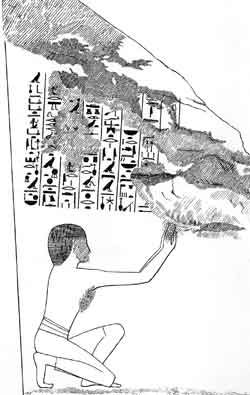
Sometimes this blatant censorship takes outright hilarious forms like in this picture that reveals where "PaHeRy" is kneeling by water and has had her tits carved out. In case you have not figured it out yet Pa-HeRy is not a name but rather a title like scribe HeRy-iRy Justified. (This is revealed by the genealogy on east wall of ahMose's mausoleum.) Pa=Noble and He=scribe. Ry=sibling?
Question remains... Which ahMoses is talking on the wall here, there were so many and people seem to confuse them all the time. Why did no one specify who's story this is? Why have almost all the naming texts in that tomb disappeared? aBana was the name of his mother but it was not her tomb. Why was her name united with his name? Why attach his name to the mother if he himself was so famous in all of Egypt? Why is his "Favoured position" mentioned specifically and after the fact? Was his favour in question "by his lord" or was the avatar "Favoured" kind of like Justified? If ahMose made the tomb himself why did his grandson claim the credit? ahMose's tomb is quite "battered" and is very different from the other tombs in the cliff - where they are usually a square room with pillars, ahMose’s tomb is a long, narrow corridor, then a long, narrow transverse hall. The decoration of the entrance hall was left unfinished. The right hand side of the hall was carved in relief and include figures of the King, Queen and the three princesses of the royal family beneath their god aTen (near the entrance), but the left side has sections that were only partially drawn with the draughtsman's red outline only. Deeper in the left side of the wall that pictures ahMoses as young boy with his mother has been clearly hacked away. Why? What was pictured there that somebody did not want us to see? Why has so much of the story been carved away later? (See Ref. Video: 0:58sec & @5:59sec) Some of the story has been quite deliberately removed while around the hacked parts its intact. After the exile the need to finish the tomb no longer existed.
It appears that Moses chose exile after his adopted mother aBana (aka Queen Hatshepsut) died rather than risk a civil war with his adopted mothers family.
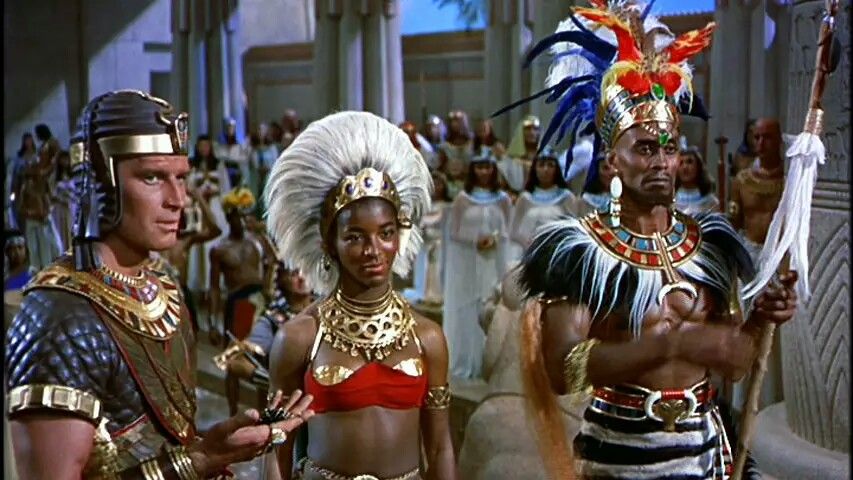
King of Kush
Moses was 40 years old when he was forced to flee Egypt. (Acts 7:23).Not much is known about the middle 40 years of Moseses 120 year life. Having conquered Kush while in command of Pharaohs army and his Kushite Mercenaries (and slaves) - Moses took his fleet and sought refuge in Kush. According to the book of Jasher (Hebrew, "Sefer ha-Yashar" = "Book of the Righteous One") he ruled there 40 years - first as a viceroy to pharaoh then later 26 years as a king. (ref. Book of the Just aka Jasher, Chapter 76.) This allowed him to stay in contact with his "family" and children most of whom were adults and probably married by now to some minor royalty and still have their support in exile. Zipporah (Hebrew for "little bird") was apparently a nick name that Moses gave his Kushite wife. Her father "Jethro" was one of the before mentioned "Princes of Kush" and also a high prince/priest. He and his brothers had ruled as kings south of Elephantine. (Jethro's Hebrew title ReuEL means "a friend of God".) As a prince of Egypt Moses was a good match for princess Tharbis aka Zipporah. Jethro was a descendant of both Midia and Kenia and as such he was also royalty. This mention of his multiple "lineages" has confused many to belive that Jethro hailed from "over seas" and over the desert even though bible clearly states Moses married "Ethiopianess". It also clearly states that Jethro and Zippora were descendants of the Kenʹite aka Kush (descendants of Cain ie. Kenia'tes/Kanites/Caʹnaan·ites) - Numbers 12:1, Judges 1:16, Judges 4:11.
Genealogy has little to do with location. Exodus never mentions that Moses did a desert crossing not to mention crossing Nile, Reed Sea and Sinai (Peninsula or AbysSinai?) (and possibly Reed Sea again) to reach Zippora's home. This seems to be "urban" legend concocted to support the idea that Jethro was "definitely not" black and that all descendants of Midia aka "Medianites" live in (Saudi) Arabia. This notion is simply absurd. (Did Esau or Joseph stay in Israel?) More likely Moses simply took his men (with as much of his 'loot' as he and his servants could stuff in) and sailed the Nile to Kush with his men and servants to lay low for a while until his family sent word that he could come back. This way he could stay in touch with his family in Egypt by using the family ships and send luxury items back to them in Egypt. Business was good. He was finally safely away from the murderous court of ahMose family. Time passed.
Kush was also called Nubia. It was located on the Nile Valley south of Egypt. To control commerce on Nile the Egyptians pressed south into Kush. Many centuries caravans and ships from the south supplied Egypt with exotic treasures while adopting their religion and paying customs to their Egyptian neighbors. Such ships offered easy escape to south from Egypt. Genesis lists Afrik a dark skinned descendant of Midia who gives his name to Africa! These families were spread far and wide and should not be confused with locations. In this context both Kenʹite and Midia clearly refer to family lineage while Kush refers to kingdom, language and location. "Kush" was also the language that Moses spoke 40 years after escaping Egypt to the Kingdom of Kush. The native name of the Kushite Kingdom was recorded in Egyptian as k3š, likely pronounced kuɫuʃ or kuʔuʃ in Middle Egyptian when the term was first used for Nubia, based on the New Kingdom-era Akkadian transliteration as the genitive kūsi. Meroitic is an extinct language also referred to some as Kushite after the apparent attested endoethnonym Meroitic qes, qos (transcribed in Egyptian as kꜣš). Even though the language of Kush no longer exist remnants of it still live to this day in common usage. (ref. food. Arabic: كُسْكُس kuskus)
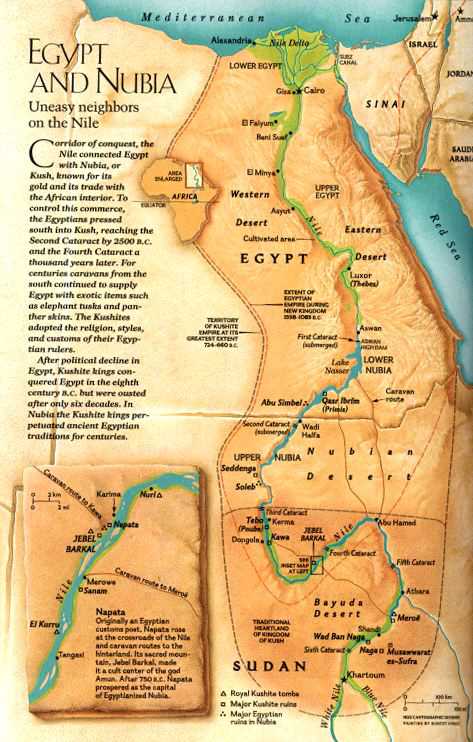 This interpretation about his family was also recorded by the medieval commentator, Rashbam. Already in the Second Temple period, Josephus explained some background when and why Moses contracted to marry this woman. He offers one version of this tale, which begins with Moses in his early years as an Egyptian prince (before he killed the Egyptian taskmaster and went into exile), leading the Egyptian army in a battle against the Ethiopians:
This interpretation about his family was also recorded by the medieval commentator, Rashbam. Already in the Second Temple period, Josephus explained some background when and why Moses contracted to marry this woman. He offers one version of this tale, which begins with Moses in his early years as an Egyptian prince (before he killed the Egyptian taskmaster and went into exile), leading the Egyptian army in a battle against the Ethiopians:Antiquities of the Jews 2:252-253
--- 252 Tharbis was the daughter of the king of the Ethiopians. Observing Moses leading his army near the walls and fighting courageously, marveling at the inventiveness of his undertakings and believing that for the Egyptians who had earlier despaired of their freedom he was responsible for their success, while for the Ethiopians who had prided themselves on their successes against them, he was responsible for their danger in the extreme, she fell madly in love with him. When passion got the better of her, she sent to him the most trustworthy of her servants to enter into discussion about marriage.
--- 253 When he accepted the proposal on condition of her surrendering the city and gave pledges on oath, indeed, that he would take her as a wife and that, having conquered the city, he would not transgress the agreement, the deed anticipated the words. After the annihilation of the Ethiopians, giving thanks to God, Moses contracted the marriage and led the Egyptians back to their land.
Josephus did not make up the story of Moses’ escapades in Ethiopia, since part of it (the campaign against Ethiopia) already appears in the work of the second-century BC. Hellenistic Jewish writer Artapanus of Alexandria. Joshua gives a "slightly" different angle to the marriage contract. "After that Moses "consented" to stay with the man" (and his daughter) and they lived happily ever after. The End.☺ (Exodus 2:21)
It appears that Moses chose "retirement" (ie. house arrest with his Kushite wife) after the Kushites grew tired of his rule rather than risk a civil war with them.
Prophet of Israel
Moses was 80 years old and enjoying his forced retirement while grazing the family sheep. (Bible doesn't actually say that they were his or that he even lived near Hor'eb back in 3513 BC - just that he happend to be there, doing that.) It was at this time God approached him near mount Hor'eb. Having several children and comfortable life in Kush he understandably did not wish to leave his family home near HorEb and return to Egypt where he was still possibly wanted for murder - just to "speak" to people who had often fought him, ridiculed him and then rejected his help. That's why God sent Aaron to fetch him.Moses now said to Jehovah: “Pardon me, Jehovah, but I have never been a fluent speaker, neither in the past nor since you have spoken to your servant, for I am slow of speech and slow of tongue.” Jehovah said to him: “Who made a mouth for man, or who makes them speechless, deaf, clear-sighted, or blind? Is it not I, Jehovah? So go now, and I will be with you as you speak, and I will teach you what you should say.” But he said: “Pardon me, Jehovah, please send anyone whom you want to send.” Then Jehovah’s anger blazed against Moses, and he said: “What about your brother Aaron the Levite? I know that he can speak very well. And he is now on his way here to meet you. When he sees you, his heart will rejoice. Exodus 4:10-14
Having spent the first 40 years of his life speaking middle-egypt in Pharaoh's court and the next 40 years speaking Kush with his wife's family - Moses barely spoke Hebrew (the slave tongue). This explains why he said he was not a "fluent speaker" when refering to the God of "their" forefathers the "Hebrews ie. heqa khasut”. After (re)uniting with God's "messenger" ie. his "big" brother and accepting the "mission" to help free the slaves - Moses and Aaron headed north towards Egypt (from Kush). Along the way "the messenger" (greek angel) tries to "help" Moses by circumcising his son. Moses and Aron arrive alone. No wife, no son. Seeing their Egyptian Little Brother turned to a different type of pagan - Aaron and Miriam harshly criticize 80 year old Moses because of his marriage to a Kushite (Ethiopian) woman.
And Miriam and Aaron spoke against Moses on account of the Ethiopian woman whom Moses had taken, because he had taken a black woman. Numbers 12:1 Exodus 18:1-5.
The Book of Genesis identifies the nations of Africa as descendants of Ham (son of Noah.) The Midianites themselves were a dark-skinned people often called Cushim (the Hebrew loan word used to describe dark skinned Africans.) Interestingly this would put the burning bush (at mount Horʹeb) in Africa somewhere in Sudan (probably not as far as current Kenia.) (Exodus 3:1) This explains why - at first - Moses and Aaron were retracing their path and leading Jews back to south towards Kush and mount Horʹeb where the "mission" to save Jehovah's people started (and towards his home and safety) rather than east (Exodus 13:17) towards the promised land "although it was near". It was several months later that Jehovah God reminded them of His "promise" and diverted them east towards (Abys)Sinai. He could see the chariots leaving middle Egypt. It was time to go. Perhaps because of this many believe that Moses went to Jethro to mount Horʹeb but bible clearly states that Jethro went to Moses to unspecified mountain (Sinai?) apparently in an effort to reunite Moses with his family whom the Jews had rejected because of their skin color and different customs (ref. recurring argument about circumcision) or perhaps to warn him about the news from north.
"So Jethʹro, Moses’ father-in-law, along with Moses’ sons and his wife, came to Moses into the wilderness where he was camping at the mountain of the true God." Exodus 4:24-26
Bible returns to this theme in the life of Solomon with the visit of the Queen of Sheba which is also understood to be Ethiopia (Kush) which would possibly make her a royal descendant of Moses and Zippora (aka Princes Tharbis) either trough Gershom or ELiezer. Haile Selassie was the last King of Ethiopia. Amazingly, this royal lineage was founded on the understanding that they were the decedents of the House of Solomon. According to the biblical account, Solomon had 700 wives and 300 concubines. The wives were described as foreign princesses, including Pharaoh's daughter and women of Moab, Ammon, Edom, Sidon and of the Hittites. How many came from Kush and how many sons did Solomon have with Kushite Princesses?
Josephus story explains the reason “Why Moses organized Israel as an army?” (Exodus 13:18) Jethro is credited for suggesting a military “style” structure for delegating the work of justice for the people, but the text clearly envisions and organizes the people into martial movements troop by troop. This was clearly unsuited to this group of people, former slaves who were accompanied by their families, herds and all of their possessions. And, the first military engagement this group faced was an abysmal route. So why do this? Because this is what Moses knew. A general deals with this problem in a certain way, and this seems to be training that Moses has. This military organization sets up the problems this community will face, and eventually cause. The rag-tag group of the first generation gave way to a real army developed by Moses and given to Joshua to conquer the land rather than to simply enter it as missionaries and the outcome is not at all as promised. Then again people respond poorly when “millions” of folks show up on the doorstep so a military formation isn’t completely wrongheaded.
This pattern of facts is also reinforced by genetic studies of African populations claiming Jewish ancestry.
Mountain of God
So where is Mount HorEb? Nobody seems to know. (Hebrew: חֹרֵב Hor'eb The "mountain of the true God" at which the Bible states that Moses saw the burning bush often mixed with Mount Sinai where Moses received the 10 commandments both of which many believe to be volcanic mountains. There are no active or inactive volcanoes in Sinai peninsula but there are several in Sudan and Saudi Arabia so logic dictates these to be the probable locations for these holy mountains. HorEb means "The mountain of the true God" so it might simply have been general term for any (volcanic) mountain that was considered holy. Remember that Moses did not speak or write Hebrew/Arameaic well so Joshua probably had to translate his words from middle-egypt and Kush when he was transcribing Torah.There is also no consensus as to the meaning of Mount Sinai (Hebrew: הַר סִינַי, Har'Siʹnai sometimes called mt. Arafat) or where it was located even though bible clearly states that it is in Arabia. "Now Hagar (aka. Harrat) is Mount Sinai in Arabia; she corresponds to the present Jerusalem, for she is in slavery with her children." - Galatians 4:24 - 25. (Exact quote.) Arabia is in Arabia. Not in Egypt (or what they later started calling "Sinai peninsula" which is STILL PART of Egypt). Still the Protestant reformer John Calvin took the view that Sinai and HorʹEb were the same mountain (that was not in Arabia), with the eastern side of the mountain being called Sinai and the western side being called Horʹeb. Abraham Ibn Ezra suggested that there was one mountain, "only it had two tops, which bore these different names". Hebrew Bible texts describe the theophany at Mount Siʹnai in terms which some scholars, including Charles Beke, have suggested literally describe the mountain as a volcano.
Mount Siʹnai smoked all over, because Jehovah came down upon it in fire and its smoke was rising like the smoke of a kiln, and the whole mountain was trembling violently. As the sound of the horn grew louder and louder, Moses spoke, and the voice of the true God answered him. - Exodus 19:18-19
So... Sinai that is not Sinai and not even in Sinai but rather HorEb (in Kush) or Hagar (in Hebrew) or Harrat (in Arabic). No wonder people are confused. Rember, Moses had conquered north and east so "Sinai Peninsula" was Egyptian-controlled territory from which Moses fled away in to exile - not towards! South was the only practical option. They "WENT UP" (‘ā·lū) the Nile! "Out of the Land of Israel" Away from Egypt! Exodus 13:18-19 This deliberate attempt to rename Moses and "move the mountain(s)" to something that is more acceptable to general public has left people in total bewilderment and even left us questioning whether the entire story is true. With Sinai we do not have to guess. Sinai is in Arabia. With HorEb we must guess. However in 1 Kings 19:8, Elijah's visit to Horʹeb gives us a clue to it's approximate location if we assume that he managed to "run" 50 km per day on average. His trip took him 40 days. (2000 km) That would put Hor'eb's location somewhere near Khartoum Sudan. There are 5 volcanoes in Sudan fairly close to Khartoum. One of them was active 3500 years ago.
Truth is objective, Reality is subjective.
While extremely unpopular among the Jews (and Christians) this "Kushite theory" would explain many things that confuse people.- It explains the near constant confusion people have with mount Horʹeb, the stone of Hor'eb and mount Siʹnai.
- It explains the similarity of the words Har (mountain in Hebrew) and Hor (mountain in Kush).
- It explains the similarity of the words El (God in Hebrew) and Eb (God in Kush).
- It explains the origin of the phrase "The mountain of the true God".
- It removes the need for elaborate explanations for the phrase "40 days and 40 nights" ie. why it took Elijah as long as 40 days to travel to Horʹeb since it only takes 10 days to walk to what is now called Siʹnai peninsula from Jerusalem. (1 Kings 19:8)
- It explains the HARSH criticism by Aaron and Miriam. Moses married a black woman and had two black sons. (Against tradition - Genesis 28:6)
- It explains why Moses somehow appeared to cross Red Sea when taking his sheep out to pasture (grazing). "Midian" is usually thought to be east of Gulf of Agaba (Red Sea) while mount HorʹEb is usually thought to be west over the Red Sea in the middle of "Sinai" peninsula. How far did Moses take his sheep to graze? Almost 200 km over the sea and desert? You have to be "true believer" to belive that. The location of "the Midian Priest" and HorEb makes no sense in that context.
- It removes the need to concoct elaborate stories why Moses would have traveled so far just to graze the sheep. (Of course he was NOT feeding Egyptian Slavers on some mines in so called Sinai paninsula. Get real. That is just another urban legend invented to support impossible narrative.)
- It explains why the "Exodus" originally headed south towards safety instead of east. Exodus 13:17.
- It removes the need to invent a "second" wife. Tharbis in Kush/Nubia, Zipporah in Midia/Arabia.
- It explains why it took them 3 months to get to the "Wilderness of Sin" aka sî·nāy. miḏ·bar" (lit. Sinai in middle of Water.) (NOT mnt. Sinai)."
- It explains why it took over a year for the Exodus to reach the promised land (first time). If they decided to travel trough an Egypt controlled war zone that has no water why did it take them over 20 times longer than any reasonable estimate would allow and how did they provide water and food for ~3 million people during that year???
- It removes the biggest problem with the traditional exodus Route to Mt. Musa in regards to the section between the "Wilderness of Sin aka Dar Mid Bar" (lit. River in middle of Water) and Rephidim since there is no need to "journey by stages". The difficult part of the "traditional" interpretation of the journey is actually between Elim and the "second Red Sea camp", one stop before the "Wilderness of Sin". Once you reach the "Wilderness of sin", the terrain becomes easy again till you reach Rephidim (Meribah). Then to the horror of traditional route advocates, the route becomes difficult again between Rephidim (Meribah) and the "Wilderness of Sinai."
- It explains why they never crossed their own path while wondering 40 years in "Sinai". Because Sinai is in ARABIA!
- It puts HorEb somewhere in Africa near Kush/Nubia/City of Media (DarFur. It was renamed DarTunjur when the Tunjur ruled the area.)
- It puts the "Reed Sea" (al·yam·supp or sudd) crossing not too far from Abys Sinai.
- It puts mount Sinai somewhere in Arabia just like Galatians 4:25 states. Because "Road Hagar" by Mount Sinai is in ARABIA!
- It explains the "bitter water" in Marra aka HorEb. Volcanic Sulphur tends to do that.
- It explains why Quran calls Pharaoh's grave "Yam" (aka Al-Yam-Supp). The "sea" is mentioned as “Yam” in some verses and was mentioned as “Bar/Dar ie. water” in other verses and they both stand for the same thing.
- It explains how Moses knew about Job's story. His father in-law (Jobab aka Re-U-EL aka Triple god) told him about his history and suffering. Reuel or Raguel (Hebrew: רְעוּאֵל , Modern: Rəʿūʾel, Tiberian: Rŭʿūʾēl; Edomite: 𐤓𐤏𐤀𐤋, RʿʾL), meaning "God shall pasture" or more specifically "El shall pasture" (as a shepherd does with his flock) is a Hebrew "name" associated with several biblical and religious figures.
- It explains why the Book of Job(ab) was included in the canon even though it clearly does not belong as it is the only non-jew book in the bible and does not directly deal with Messianic line. (See. Jobab below.)
- It explains why "they" had to "move" Sinai. (see. map on the bottom.)
Other peoples belief systems
Other peoples belief systems have "messed up" much of our history and make genealogy and family lines difficult to fathom. There are always those pesky black sheep among our ancestors who don't belong. The traditional Aramaic translators of the Torah from Rabbinic times, Targum Onkelos (ad loc.), would like us to believe that “Kushite” meant "beautiful" (and thus a reference to Zipporah even though Zipporah literally means "little bird") suggesting that Miriam and Aaron were upset about their separation not her color or customs. This prevarication seems unlikely considering it was Aaron who escorted Moses all the way back to Egypt not Zipporah. (Exodus 4:24-26) Zipporah and their sons turned back (or were turned back) halfway trough the journey. Why? Perhaps there was more than one argument on the journey? One recurring argument about circumcision and one started by Aaron about Moses's choise of wife. (Again). The Jews did not take him seriously the first time when he was Pharaos Harem guard and had a foreign/Egyptian wife, concubines and slaves. Moses is clearly reluctant to assume a leadership position after all this time now that he has a Kushite wife. Who cares who rules now back in Thebes. This "high born" criminal with black wife (not to mention abandoned Egyptian family) was supposed to be their chosen leader? 40 years of Aarons dreams crushed by too many bad choices by his "little" brother. Bible does not say if the burning bush was still burning when Aaron met Moses on HorEb but obviously the happy reunion quickly went down hill.It's likely that the burning bush was located near an active volcano in Southern Nile Valley. (Kush capital Karima was by the Nile river near Khartum). The word mountain in the Hebrew is har - Hor'Eb aka mountain of Eb. "Eb" might simply mean "God" in Kush language. That would explain the "holy stone" near the "mountain" that Moses struck to get water. (Muslims happen to have such stone near Mecca right by road Hagar and volcanic mount Arafat.) Remember that Moses stayed with the Kushite people 40 years after his escape from Egypt where he spent the first 40 years of his life. Middle-egypt was his "mother" tongue (even though Miram probably tried to teach him Hebrew) and he probably spoke Kus better than Hebrew so the eventual translation problems with Kush/Meroitic "names" in now an extinct language make more sense than trying to figure out why Hor'Eb and Har'Siʹnai seem to constantly change places in Torah. According to the documentary hypothesis, the name Siʹnai is used in the Torah only by the Jahwist and Priestly Source (people like Moses and Jesus who insist on using Gods personal name), whereas Horʹeb is used only by the Elohist and Deuteronomist (people like Pharisees and Sadducee who refuse to use Gods personal name and have removed or replaced it from 7000 different scriptures). It is interesting to note that originally name Sadducee (Heb. sōperêm, writers) was used merely of clerks whose function was to copy royal and sacred manuscripts. This huge difference in translation styles between these two groups would also imply a translation problem rather than logical contradiction in the use of "holy" names. Thousand years after Moses this "Slavery of Hagar/Harrat children" had grown to such hatred that the Ketuvim ("Writings") of the Jewish Bible had dropped the last verse (which can still be found in the older/earlier Greek translation) of the the book of Job (Jobab) because that genealogy can be used to trace some unwanted facts of life.
Jobab
The Septuagint (200 BC), an ancient Greek translation of the "Hebrew/Aramaic" Old Testament and oldest scripture ever found - has a better "preserved" final verse of Job's genealogy (than the one "translated" by Sadducee), asserting him to be a "grandson ie. descendant" of Esau and a ruler of Edom. (You guessed it. Edom is also not a location but a family line. Remember Esau left his fathers land and went to new land called Canaan | Dar Har śê·‘îr (lit. River Mountain śê·‘îr?)This man is described in the Syriac book as living in the land of Ausis (some translate this as ʾereṣ-ʿŪṣ and say it was on the borders of Idumea and Arabia): and his name before was Jobab aka (Hobab who is identified as Moses's father in law in Judges 4:11); and having taken an Arabian wife (remember "Hagar" Mount Sinai is in ARABIA!), he begot a son whose name was Ennon. And he himself was the son of his father Zare/Zera(h), one of the sons of Esau, and of his mother Bosorrha, so that he was the fifth from Abraam. And these were the kings who reigned in Edom: first, Balac, the son of Beor, and the name of his city was Dennaba: but after Balac, Jobab, who is called Job, and after him Asom/Husham, who was governor out of the land of tê·mān: and after him Adad, the son of Barad, who destroyed Madiam in the plain of Moab; and the name of his city was Gethaim. And his friends who came to him were Eliphaz, of the children of Esau, king of the Thaemanites, Baldad sovereign of the Sauchaeans, Sophar king of the Minaeans.
Their later generations seemed to think that nothing good can come from "South" or at least nothing good can exist there anymore. It was time to move the mountains and change heroes.
"The name of the brave man is in what he has done; it will not perish in the land forever."
-RaMoses aka Ramses
References
Addendum 1 - Names and Titles
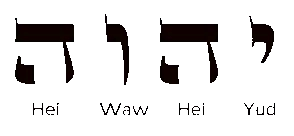
Jehovah or Jahweh (read from righ to left).
Personal name of Hebrew God (before Sadducee aka Sofer.)
Hebrew YHWH. It is the letters of the tetragrammaton, Latinized into JHVH, with vowels inserted. "Yahwe, Yahweh" or "Yehowah". The form Jehovah or Jehova, though, is very commonly used.
"Official" translation: God himself tried to explain the meaning of his name to his faithful servant Moses. When Moses asked about God’s name, Jehovah replied: “I Will Become What I Choose to Become.” (Exodus 3:14)
Sam's translation: "I'll do WHAT EVER it takes."
Pharaoh: ( ˈfɛərəʊ) / noun the title of the ancient Egyptian kings (and queens) Derived forms of Pharaoh Pharaonic (fɛəˈrɒnɪk ), adjective Word Origin for Pharaoh Old English Pharaon, via Latin, Greek, and Hebrew ultimately from Egyptian pr-o "great house".

Pharaoh seQenen-Re (Tao) ah-Mose (sqnj.n-ra mAa-xrw)
Re (Ra) is the ancient Egyptian deity of the sun.
ahMose titles
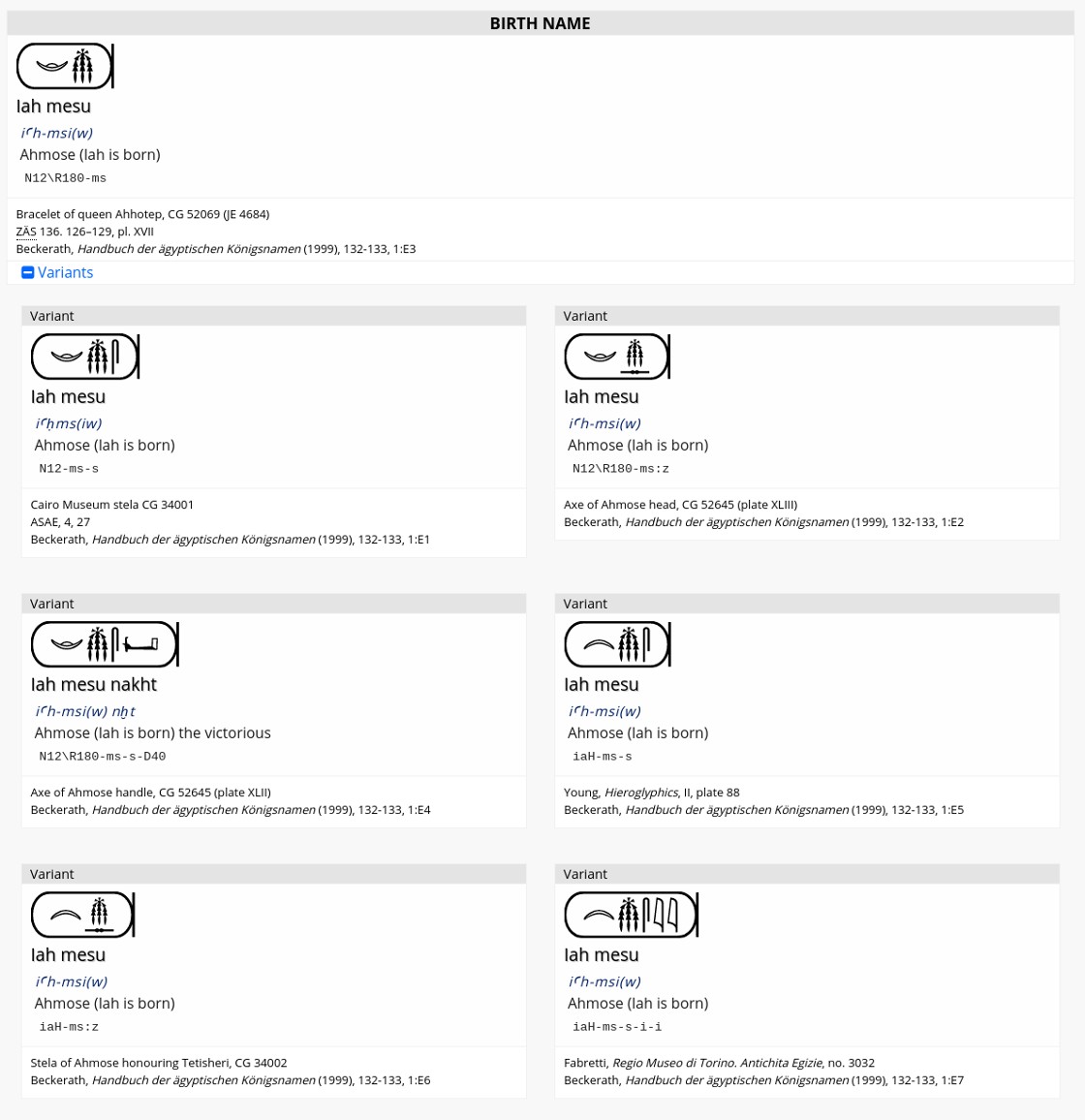
Addendum 2 - Autobiographies and Books
Autobiography of prince of Egypt - ahMose son of aBanaAutobiography of governor of Nekheb - ahMose pen-nekhbet
Autobiography of King of Cush. - Book of Jasher, Chapter 76
Book of the Righteous (PDF) - aka. Book of Jasher
Tanakh (Judaism)
Torah (Instruction)
Nevi'im (Prophets)
Ketuvim (Writings)
This document in PDF format - Unpopular history of Moses v1.5. (In hopeless need of update).
Addendum 3 - Maps A
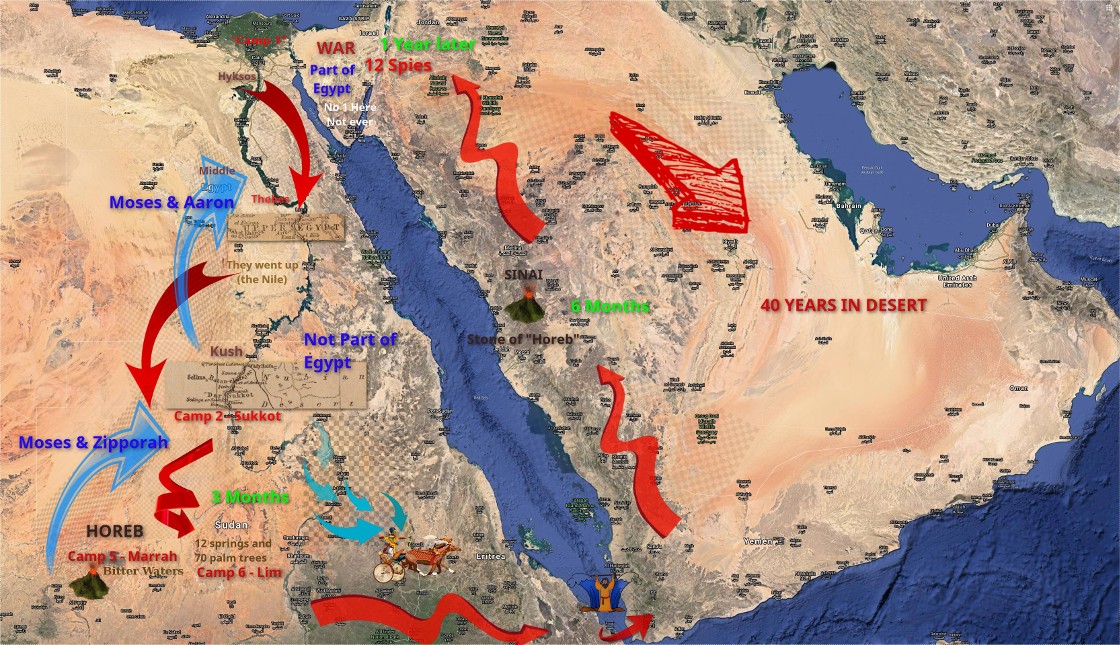 Exodus! Most likely path with stages / camps. (Larger version.)
Exodus! Most likely path with stages / camps. (Larger version.)Location of Media
Old map showing "Media" aka Midia, Mitanni, Metammeh, Madon west of Kush capital Meroe.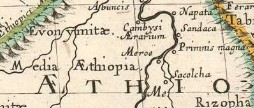
Ancient Midia side by side with Kush aka Nubia (DarFur) on a larger version of this map and on this ancient map by the Niger river (Partie De La Haute Aethiopie 1656) and on this map from Robert Desilver's Map of Africa (1827). This is where Moses met Job and married his daughter.
Location of (Dar) Sukkot
The Hebrew word "sukkah" (plural: "sukkot") refers to the temporary booths that people lived in, not to the Tabernacle.Old map showing "Stage 2" (camp 2) aka "Sukkot or Dar Sukkot" in the middle of 'Upper Nile Valley'.
It was the "first" gathering place for a good reason. Sukkot was no longer in (middle) Egypt!
It was a safe haven unlike Egyptian controlled "Sinai Penisula".

Dar Sukkoth on larger version of this map. (Dar Sukkoth on the bottom).
Photo of ancient miniature map which was carefully removed from a tiny antique atlas. This antique map is very small. It measures approximately 4.5 by 3 inches. "1902 Rare EGYPT - Map of Egypt". (Edit 2023 - Link removed.)
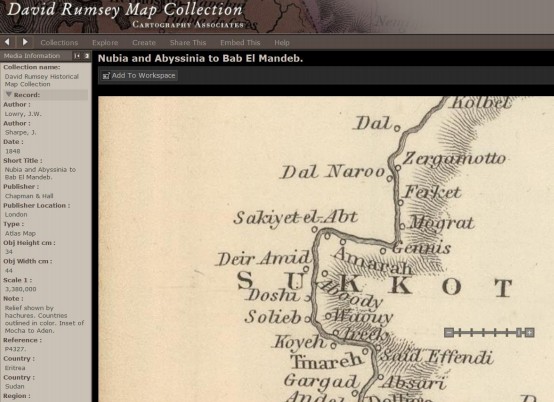
Sukkkot on larger version of this map. (Sukkoth on the upper left corner).
Photo of ancient map from the absolutely amazing "David Rumsey Map Collection" showing Sukkoth next to Amarah.
Even more Sukkot here. A.J Johnson's Sukkot (1864) , Chapman and Hall (1848) , J. Arrowsmith (1832) showing Sukkot and Marrah both on the same old map.
This is no rocket science people. Two centuries ago EVERYBODY knew where Sukkot was.
Old map showing Stage 4 before "Baal Zephon" & Migdol" Mouth of Gorge Hirot | pi Ha Hirot | 'ha' literally means "Mouth" (to the west).

Old map possibly showing "Stage 5 & Stage 12" aka "Hor'Embea" in the middle of 'Sin' wilderness (not desert) ie. Abys/Expanse.
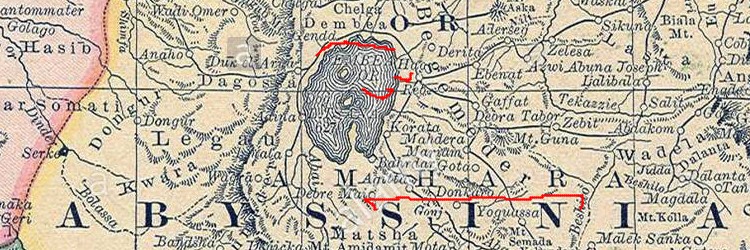
Hor Embea on larger version of this map. Also note the names Abys'Sin and am'Hara.
Another possible site is Volcano Jebel Marra aka "Bitter Water"
Weather map showing "Stage 6" e'Lim aka Desert of Lim. Looks pretty hot.
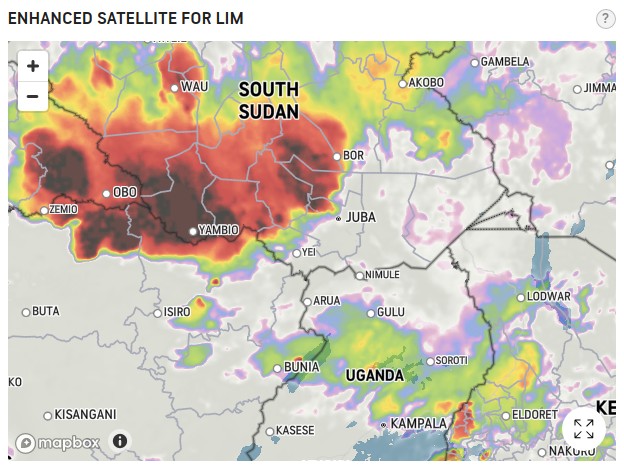
Location of Mitanni aka Metammeh aka Madon aka Midian aka Median.
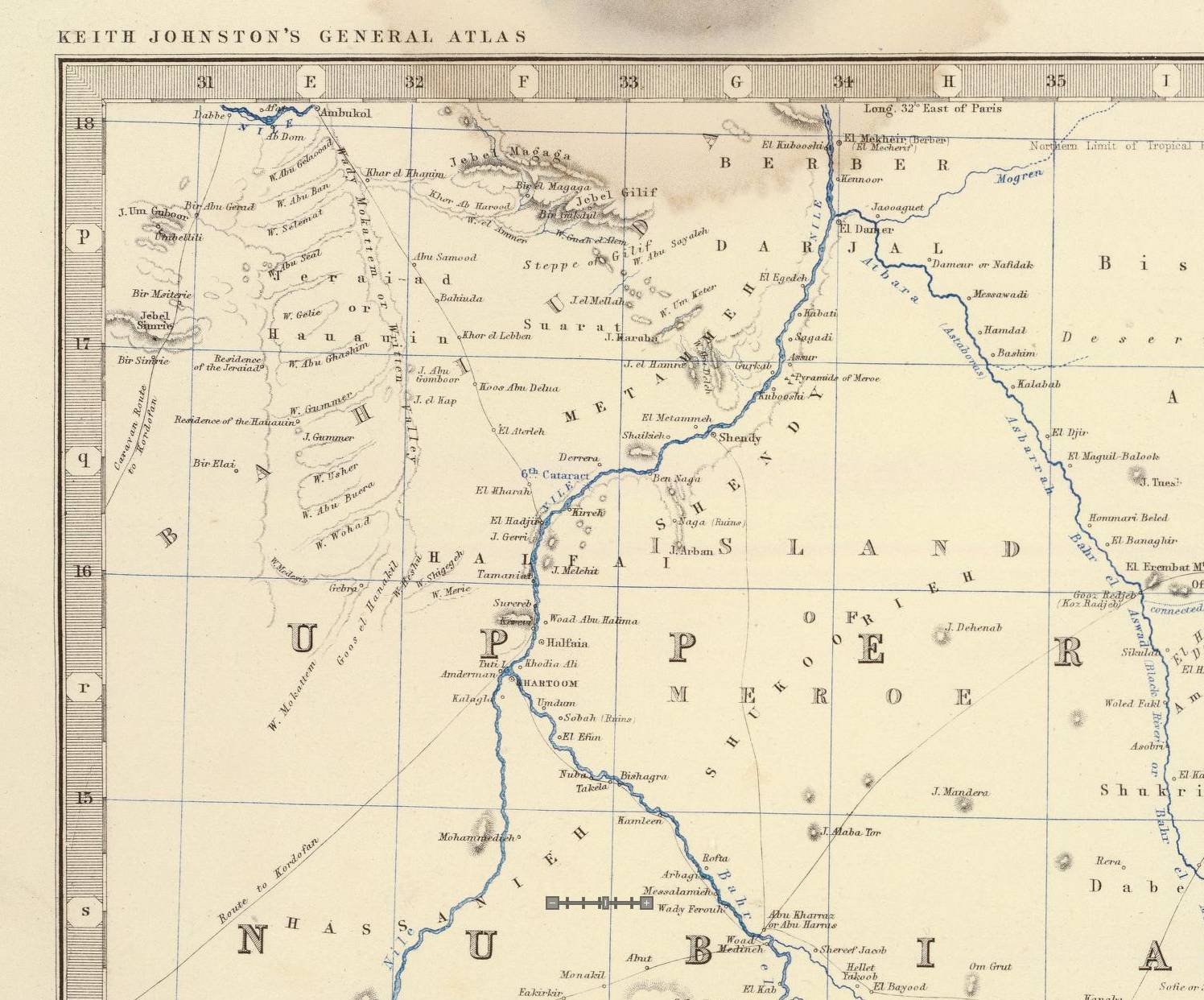
"No native sources for the history of Mitanni have been found so far." (Of course not. Because they are all looking in the wrong place - near Israel. Again.) "Mitanni" was located South West of Kush/Nubia capital of Meroe.
Addendum 4 - Time lines / Chronologies
Biblical chronologyAll timelines and chronologies in this "paper" are based on Biblical sources (because Egyptians are totally hopeless with dates of their glorious past and so called historians who belive them are even less clueless). So far Jews have only vandalized "holy names" - not dates - and Geneology is near sacred to them/us?
Some key years in bible timeline that help reference other events.
4026 B.C.E. Adam created
2970 B.C.E. Birth of Noah. Son of Lamech and tenth in line from Adam through Seth, 126 years after Adam’s death.
2470 B.C.E. Noah’s first son (probably Japheth) was born, and the record shows that another son, Shem, was born two years later. The time of Ham’s birth is not stated.
2370 B.C.E. In the 600th year of Noah’s life, in the second month, on the 17th day of the month, on that day all the springs of the vast watery deep burst open and the floodgates of the heavens were opened. -Gen 7:11
2020 B.C.E. Noah lived 350 years after the flood, dying about two years before the birth of Abraham.
2018 B.C.E. Birth of Abraham.
1943 B.C.E. Abraham moved from Haran and Abrahamic covenant (of 430 years of temporary residence) starts. (Gen 12:4-5, Gal 3:17).
1919 B.C.E. Abraham is circumcised and circumcision covenant starts.
1728 B.C.E. Famine. IsraEl’s entry into Egypt (that lasted 215 years). Jacob was 130 he and his sons went to Egypt.
1657 B.C.E. Death of Joseph.
1593 B.C.E. Birth of Moses.
1513 B.C.E. Exodus (Mosaic law covenant starts).
1512 B.C.E. Tabernacle completed (Tent of the "meeting"). Prequel to Temple. Also filled with holy smoke.
1512 B.C.E. Levitic covenant.
1473 B.C.E. Joshua commissioned to succeed Moses. Israel enters Canaan.
1473 B.C.E. Jericho’s destruction (and covenant with IsraEl).
1467 B.C.E. Major conquest of the land completed.
1467 B.C.E. Tribes receive land after conquest.
1117 B.C.E. Saul anointed as king.
1070 B.C.E. Je·ruʹsa·lem (Twofold Peace). The capital city of the ancient nation of Israel.
1077-1038 B.C.E. David’s reign.
1070 B.C.E. Davidic covenant.
1037-998 B.C.E. Solomo ruled as king of IsraEl 39 years. Married Pharaohs daughter.
1033 B.C.E. In the fourth year of his reign, King Solomon found himself at peace with his neighbors and began the construction of the (1st) temple.
It took seven years to complete the Temple. In the twelfth year of his reign, King Solomon dedicated the Temple and all its contents.
1026 B.C.E. (1st) Temple inaugurated.
997-607 B.C.E. Divided Kingdom. Jeroboam’s rebellion split the nation into two kingdoms, and Jerusalem was left as the capital of two tribes, Benjamin and Judah, under Solomon’s son Rehoboam. Solomon sought to kill Jeroboam. Jeroboam fled to Egypt where Shishak gave him refuge (1 Kings 11:40).
993 B.C.E. Pharaoh Shishak’s attack on Jerusalem came during Rehoboam’s fifth year with 400,000 infantrymen and robs the temple taking Salomon's golden shields.
978-937 B.C.E. In the days of Asa - Pharaoh Zerah (the Cushite) attacked Jerusalem with million men army. 2 Chronicles 14:9–15.
913-907 B.C.E. Jehoram saw the city invaded and looted a second time by an Arab-Philistine combine, this despite the strong defense walls.
829-778 B.C.E. King Uzziah made notable additions to the Jerusalem's defenses.
758-740 B.C.E. Hoshea reigned.
720 B.C.E. Conquest of (North IsraEL) Samaria by the AsSyrians.
716-662 B.C.E. The reign of Manasseh brought further wall construction along the Kidron Valley.
629 B.C.E. Pharaoh Necho’s battle resulting in Josiah’s death. (1Ki 14:25; 2Ki 17:4; 2Ch 35:20-24) The difference between the above dates and those generally assigned by modern historians amounts to as much as a century or more for the Exodus and then narrows down to about 20 years by Pharaoh Necho’s time.
609 B.C.E. Babylon’s appointee, King Zedekiah, tried to throw off the Babylonian yoke, and in his ninth year Jerusalem again came under siege. (2Ki 24:17-20; 25:1; 2Ch 36:11-14) An Egyptian military force sent to relieve Jerusalem succeeded in drawing off the besiegers only temporarily. (Jer 37:5-10). The walls of Jerusalem were breached, in Zedekiah’s 11th year, and the city was taken.
607 B.C.E. NebuChadneZar (not a personal name but rather a combination of titles like most PharAos had) destroyed Jerusalem (and the 1st temple) and took captive the dethroned king Zedekiah and the land was left desolate. 2Ki 25:1-26. The city walls were breached on Tammuz 9, 607 B.C.E. A month later, on Ab 10, NebuChadneZar’s agent, NebuZarAdan, entered the conquered city and began demolition work, burning the (1st) temple and other buildings and proceeding to pull down the city walls. JeruSalem’s king and most of her people were exiled to Babylon and her treasures were carried away as plunder. 2Ki 25:7-17; 2Ch 36:17-20; Jer 52:12-20.
538 B.C.E. In “the first year” (as ruler of Babylon) of Cyrus the Persian the royal decree went forth freeing the exiled Jews to “go up to Jerusalem, which is in Judah, and rebuild the house of Jehovah the God of Israel.” (Ezr 1:1-4)
536 B.C.E. Foundation of (2nd) temple laid but work is later interrupted.
455 B.C.E. Nehemiah rebuilds Jerusalem's walls, gates and finnishes the (2nd) temple. —Ne 4:1-23; 6:15; 7:1.
2 B.C.E. Birth of Jesus.
28 A.D. Babtism of Jesus. Start of "ministerial service".
31 A.D. Death of Jesus.
31 A.D. Jesus dies. New (Apostolic) covenant & Covenant to Be a Priest Like Melchizedek.
70 A.D. Romans demolished Jerusalem and destroy the (2nd or 3rd depending how you count) temple. (Later known as Herod's Temple)
Secular chronologies I
When it comes to Moses and Exodus - modern historians can't really agree on anything (except Moses definatelly did not marry a Cananite black woman!) Secular dating of the Exodus is usually based on Manetho's attempt to combine three different egyptian sources and generally comes down to this: it happend sometime during the reign of RaMoses II, Horemheb or tutMoses III. The RaMoses II school base their claim on the store-cities mentioned in Exodus ch.1; the proponents of Horemheb cite to the Book of Olam Rabbah, and the advocates of tutMoses III raise the potent argument that the only biblical information dating the Exodus is found Kings I, noting that the Exodus occurred 480 years before Solomon began building the Temple, generally placed c. 970-960 BCE. This would set the Exodus c. 1450-1440 BCE, consistent with Joshua entering the Holy land about the turn of the century.
Using current secular chronology, this reckoning places the Exodus during the reign of tutMoses III, who some say reigned from 1479 to 1425 BCE. The birth and early palace years of Moses, which began 80 years before the Exodus, would then belong to the reigns of the tutMoses I and II (who they say reigned from 1506 BCE to 1479 BCE). These three Kings, the only ones whose reigns are consistent with the chronological reference in Kings, are referred to as “The tut-Moses.”
Conventionists are loathe to veer either from the Horemheb school, or favor RaMoses a situation which has discouraged serious investigation by Biblical scholars knowledgeable in Hebrew language, legacy, legends and commentary into the reign of tut-Moses III as the pharaoh of the plagues and the Exodus.
Secular chronologies II
Reign of ah-Mose I (Josephus called him tuth-Mose)
AE Chronology 1539–1515
von Beckerath 1550–1525
Shaw 1550–1525
Dodson 1549–1524
Malek 1540–1525
Arnold 1550–1525
Grimal 1552–1526
Redford 1569–1545
Manetho (Josephus) 25y 4m
Manetho (Eusebius) 25 years
Manetho (Jerome) 25 years
Highest attestation Year 22
Addendum 5 - What Moses
tuth-Mose was the Viceroy of Kush during the reign of aKhen-aTen. Sound familiar? tuth-Mose was given the titles King's Son of Kush, Overseer of the Gold Lands of Amun, Overseer of masons, Overseer of the borderlands of His Majesty, and Fan-bearer on the King's right. thut-Mose's rule is significant because he established peaceful relations with Mitanni and married a Mitannian princess to seal this new alliance. Sound familiar? thut-Mose was "buried" in tomb KV43 the Valley of the Kings but his body was later moved because "...insert your favourite theory here!" Sound familiar?And suddenly there is also a Queen ah-Mose (just last name - because honestly who wants to know first ladys first name, right? Obivously her first name is "first-lady" or maybe it's "the justified?") ah-Mose was never called a King's Daughter. Sound familiar? Apparantly she was an Ancient Egyptian "Queen" in the "Seventeenth Dynasty". She was the Great Royal Wife of the pharaoh, thut-Mose, and gave birth to a daughter. Sound familiar? This would make more sense if ah-Mose was a cross-dresser, no wait, that was Paheri. I bet "he" is wearing a wig in that picture of xxx-Mose on the lap of aPahana the cross-dresser with the wig.
The missing mommies problem
"The mummy of ahMose I has never been positively located. His mausoleum was found emtpy."
"The mummy of thutMose I has never been positively located. His sarcophagi was found empty."
"The mummy or tomb of thutMose II has never been positively located."
The mummy of Hatshepsut has never been positively located. Her sarcophagi was found empty.
The "royal" cache of mummies at Deir el-Bahari is also referred to as the Theban Necropolis. Basically we have no way of knowing what items or mummies were found at that location. All the items were moved and or stolen before anything was recorded. Later it was "deduced" that the mummies entombed in TT 320 were royal. There are more holes in this story than in Swiss cheese and some of those "confessions" were aquired under torture. Talk about fanatic belief systems.
Hatshepsut Problem (aka PaHeRy problem)
The erasure of Hatshepsut's name—whatever the reason or the person ordering it—almost caused her to disappear from Egypt's archaeological and written records. When nineteenth-century Egyptologists started to interpret the texts on the Deir el-Bahri temple walls (which were illustrated with two seemingly male kings) their translations made no sense. Jean-François Champollion, the French decoder of hieroglyphs, was not alone in feeling confused by the obvious conflict between words and pictures:
If I felt somewhat surprised at seeing here, as elsewhere throughout the temple, the renowned Moeris (Thutmose III), adorned with all the insignia of royalty, giving place to this Amenenthe (Hatshepsut), for whose name we may search the royal lists in vain, still more astonished was I to find upon reading the inscriptions that wherever they referred to this bearded king in the usual dress of the Pharaohs, nouns and verbs were in the feminine, as though a queen were in question. I found the same peculiarity everywhere...
The "Hatshepsut Problem" was a major issue in late 19th century and early 20th century Egyptology, centering on confusion and disagreement on the order of succession of early 18th Dynasty pharaohs. The dilemma takes its name from confusion over the chronology of the rule of Queen Hatshepsut and Thutmose I, II, and III. In its day, the problem was controversial enough to cause academic feuds between leading Egyptologists and created perceptions about the early Thutmosid family that persisted well into the 20th century, the influence of which still can be found in more recent works. Chronology-wise, the Hatshepsut problem was largely cleared up in the late 20th century, as more information about her and her reign was uncovered.
It's kind of sad to see how twisted some genealogies get when truth is unacceptable.
Because ahMose can't be Moses then his brother Herari (aka HeRy-iRy) must be adopted and PaHeRy and Kam are both male and female (at the same time) and it seems like it's all of Moses's wifes favourite name for their sons and daughters. In the case of tuthMose it gets even crazier and you end up having same names with mothers and their children. That way lies madness. And don't forget that he/she/they seem to be every where. Paheri actually ends up being his own grandpappy and uncle at the same time. Way to explain your family tree. "Look, I'm your father. Noooo..."
Addendum 6 - Mountain of God
The "name" Horʹeb first occurs at Exodus 3:1, with the story of Moses and the burning bush. According to Exodus 3:5, the ground of the mountain was considered holy, and Moses was commanded by God to remove his sandals.
Exodus 17:6 describes the incident when the Israelite were in the wilderness without water. When Moses was "upon the rock at Horʹeb", he strikes the rock and obtains drinking water from the rock. Exodus 17:7 goes on to say that Moses "called the name of the place Massah and Meribah, because of the contention of the children of Israel, and because they tempted the Lord, saying, 'Is the Lord among us or not?'”
In Deuteronomy, Horʹeb is mentioned several times in the account of the wanderings of the Israelite in the wilderness: (Deuteronomy 1:2, 1:6, and 1:19). Moses recalled in Deuteronomy 1:6 that God had said to the Israelite at Horʹeb, "You have dwelt long enough at this mountain: turn and take your journey", confirming that Mount Horʹeb was the location from which they set off towards Caʹnaan·ites. Exodus 33:2.
It is 11 days from Horʹeb/Sinai to Kadesh/Habesh (barʹne·aa) by way of Mount Seir where Esau lived. Deuteronomy 1:2
"So Eʹsau took up dwelling in the mountainous region of Seʹir. Eʹsau is Eʹdom." Genesis 36:6-8. (Some people insist on changing the name to Kadesh Barnea but barnea just means 'wilderness of wandering' and is NOT a name.)
The account of the delivery to Moses of the Ten Commandments, and references back to it, include mentions of Horʹeb at Deuteronomy 4:10, 4:15, 5:2,9:8, 18:16 and 28:69. There are similar references at Psalms 106:19 and Malachi 4:4.
Deuteronomy 5:2 is confusing on many levels because it clearly states that the people to whom Moses was speaking had been present at Mount Horʹeb when Moses descended with the commandments. This speech indicates this happened before Jehovah destroyed that generation at the desert - so many believe Moses was speaking figuratively and that this actually refers to nation of Israel rather than it's individuals. This text would also indicate that Hor'Eb and Sinai are the same mountain as many believe. Whether Mount Sinai is also called Hor'Eb is unknown.
1 Kings 8:9 and 2 Chronicles 5:10 state that the Ark of the Covenant contained only the tablets delivered to Moses at Horʹeb.
In 1 Kings 19:8 Elijah visits "Horʹeb - the mount of God". "He went on for 40 days and 40 nights until he reached Horʹeb, the mountain of the true God."
There are no references to Horʹeb in the New Testament.
Addendum 7 - Stages aka "Camps"
The "path" ie. "Stages" of Exodus! The locations of almost all of these places has been lost. Remember! These people came from all over the place and did not arrive by same route. They followed water. Kush word Dar means water (usually river). "Dar Sukkot" ie. "Water of Sukkot" or "Sukkot by the river". (Now called Abri.) Most of the Dar's here are rivers (or possibly lakes.) Arabic/Hebrew language later evolved to use words Bar/Mar for "water". Ironically it is still used in English. Help me find these rivers. Bir means well. The Well of PeDim. Stage 11. Only one well is mentioned in all the stages of Exodus. (For a good reason. You do not "water" 3 million people from a well. Think it trough. You'll figure it out. And just in case You can't... You would need 3km deep well filled with water every day.)Bible - Book of Numbers - Chapter 33
Ref. Place - - - - - - - - - - - - Bible scripture- meRaMoses | mê·Ra‘·Mesês - Ex. 12:37; Nu. 33:3,5 - "They" (ie. people with "god" Moses) left "On the fifteenth day of the first month."
- They "went up" | ‘ā·lū (the Nile!) - Ex. 13:18-19 - "Out of the Land of Israel" Away from Egypt! To Kush/Nubia.
- They "went up" | ‘ā·lū (the Nile!) - Ex. 13:18-19 - "Out of the Land of Israel" Away from Egypt! To Kush/Nubia.
- Dar SukKot | bə·suk·kōṯ - Nu. 33:5-6 - On these old maps - Map of Egypt (1902) , Chapman and Hall (1848) , J. Arrowsmith (1832).
- Dar e Tam | ḇə·’ê·ṯām - Nu. 33:6-8 - Location or description? Close to Dar Mid Bar? | turned back toward Mouth of Gorge HiRot | ha·ḥî·rōṯ. ref. Stage 8.
- Mouth of Gorge HiRot | ha·ḥî·rōṯ - Nu. 33:7-8 - Before Baal Zephon | ṣə·p̄ō·wn (aka mtn. Zebul / Zobil) before Dar Migʹdol". Magdala or Medghul?
- Dar Marrah | bə·mā·rāh. - Nu. 33:8-9 - aka Hor·Eb | hōr·eb | Volcano Jebel Marra | lit. "Bitter" water | New map. J. Arrowsmith (1832), B. Bocage (1852)
- Lim | ê·lim - Nu. 33:9-10 - Lim in south Sudan? Could also refer to El-im / Plural of God or Tree. Reference to 10+2 oasis suggest "trees".
- By the "sea" of reeds | al·yam·supp - Nu. 33:10-11 - Crossing? I don't know. Perhaps Swamp Al-Sudd. When was this changed to Red Sea? Bible says "they" went by it not accross it.) For many years the 400km wide swamp, and especially its thicket of vegetation, proved an impenetrable barrier to navigation along the Nile (which is also called "sea" in Ex. 10:19). The ancient Egyptians failed to penetrate the Sudd and reach the areas south of it. Stage 7 and 8 refer to LARGE area of water. ref. “pastures of the wilderness” miḏ·bār nə·’ō·wṯ - Joel 1:19–20.
Also see "The soldiers of Yam. Addendum 9 - Misc." - Dar Mid Bar | bə·miḏ·bar - Nu. 33:11-12 - Literally: River·Mid·Water. | NOT wilderness, NOT desert! | Description like miḏ·yā·nî aka Mid·Ian, White Nile or Meroe? | Dar/Mar/Bar all of these translate to water! Translating water to desert is a prime example of how bad the censorship with this particular peace of history has gotten.
=== Crossing of the 'sea' - al mandab or al supp/sudd === - Mid Dar BoQah | mid·dā·p̄ə·qāh - Nu. 33:13 - Dophʹkah East of Mid·Ian in an old map by E. Bowen (1747).
- Dar a·Lus | bə·’ā·lūš - Nu. 33:13-14 - aLus or They "went up" | ā·lū
- Well of PiDim | bir·p̄î·ḏim - Nu. 33:14-15 - "where there was no water for the people to drink" - Below sea level now. Sea has risen at least 35m in 3500 years while Arabian continental plate moves away from Afrika. During Exodus there was little or no water here.
- SiNay MidBar | sî·nāy mim·miḏ·bar - Nu. 33:15-16 - When did "Mid Water" became synonym for Wilderness? See stage 8.
- Dar QibRot HatTa a'Wah | bə·qiḇ·rōṯ hat·ta·’ă·wāh - Nu. 33:16-17 - They buried who yielded to craving. ie. Mass-grave
- Mouth of Gorge SeRot | ḥă·ṣê·rōṯ - Nu. 33:17-18 - Another Description | Rotting Gorge? Gorge of Death? See stage 4.
- Dar RitMah | bə·riṯ·māh - Nu. 33:18-19
- Dar RimMon | bə·rim·mōn - Nu. 33:19-20. - pā·reṣ?
- Dar LibNah | bə·liḇ·nāh - Nu. 33:20-21
- Dar RisSah | bə·ris·sāh - Nu. 33:21-22
- HeLaTah | biq·hê·lā·ṯāh - Nu. 33:22-23 - biq / bir? Well?
- Mount Sa'Per | šā·p̄er - Nu. 33:23-24 - har šā·p̄er
- Mouth of Gorge RaDah | ba·ḥă·rā·ḏāh - Nu. 33:24-25 - River/Gorge god Dah?
- Dar MaqHeLot | bə·maq·hê·lōṯ - Nu. 33:25-26 - Lot? Maybe near Dead Sea?
- Dar TaHat | bə·ṯā·ḥaṯ - Nu. 33:26-27
- Dar TaRah | bə·ṯā·raḥ - Nu. 33:27-28
- Dar mitQah | bə·miṯ·qāh - Nu. 33:28-29
- Dar Has MoNah | bə·ḥaš·mō·nāh - Nu. 33:29-30
- Dar MoSe' Rowt | bə·mō·sê·rō·wṯ - Nu. 33:30-31 - Another Description | Water·Moses·was·near? Moserah
- YaaQan | ya·‘ă·qān - Nu. 33:31-32 - Bene? No "Bene" here.
- HagGidGad | hag·giḏ·gāḏ - Nu. 33:32-33 - Hor? Possibly mountain.
- Dar YaTaBaTah | bə·yā·ṭə·ḇā·ṯāh - Nu. 33:33-34
- Dar AbRoNah | bə·‘aḇ·rō·nāh - Nu. 33:34-35
- ga Ber | gā·ḇer - Nu. 33:35-36 - Ezion? No "Ezion" here.
- qa Des | qā·ḏêš aka Kadesh or Kadesh Barnea in "Wilderness of Sin" - Nu. 33:36-37 - Near Dar Sa ă·Nan·Nîm and Meribah aka "Waters of Strife", Water from Stone. Miriam was buried in Wilderness of Sin.
- Mount Hor??? | hā·hār mê·hōr - Nu. 33:37-41 - 123 year old Aaron died at "har hōr???" | (Gorge) mtn. Mountain? Worse "translation", ever.
- Mis SalMoNah | miṣ·ṣal·mō·nāh - Nu. 33:41-42
- Dar PuNon | bə·p̄ū·nōn - Nu. 33:42-43
- Me oBot | mê·’ō·ḇōṯ - Nu. 33:43-44
- Mouth of Gorge aBarim | hā·‘ă·ḇā·rîm - Nu. 33:44-45. - Next to Mountain Abʹa·rim and Neʹbo, near border of mō·w·’āḇ and promised land.
- Dar DiBon | bə·ḏî·ḇōn - Nu. 33:45-46
- Dar Al Mon | bə·‘al·mōn - Nu. 33:46-47 - aka DibLaTaYeMah Dar Al Mon | diḇ·lā·ṯā·yə·māh bə·‘al·mōn. Means what?
- Gorge of aBaRim | hā·‘ă·ḇā·rîm - Nu. 33:47-48 - Not "har" ie. mountain but 'ha' as in Gorge/Mouth (to the west). Before Nebo | nə·ḇōw.
- MowAb | mō·w·’āḇ - Nu. 33:48-50 - Plains of Ab? | across from Jericho
Addendum 8 - Exodus Related Scriptures
Bible - Book of Exodus
Chapter 1Israelites multiply in Egypt (1-7)
Pharaoh oppresses the Israelites (8-14)
God-fearing midwives save lives (15-22)
Chapter 2
Birth of Moses (1-4)
Pharaoh’s daughter adopts Moses (5-10)
Moses flees to Kush and marries Zipporah (11-22)
God hears Israelites’ groaning (23-25)
Chapter 3
Moses and the burning thornbush (1-12)
Jehovah explains His name (13-15)
Jehovah instructs Moses (16-22)
Chapter 4
Three signs for Moses to perform (1-9)
Moses feels inadequate (10-17)
Moses returns to Egypt (18-26)
Moses reunites with Aaron (27-31)
Chapter 5
Moses and Aaron before Pharaoh (1-5)
Oppression grows (6-18)
Israel blames Moses and Aaron (19-23)
Chapter 6
Promise of freedom renewed (1-13)
Jehovah’s name not fully known (2, 3)
Genealogy of Moses and Aaron (14-27)
Moses again to appear before Pharaoh (28-30)
Chapter 7
Jehovah strengthens Moses (1-7)
Aaron’s rod becomes a big snake (8-13)
Plague 1: water turned into blood (14-25)
Chapter 8
Plague 2: frogs (1-15)
Plague 3: gnats (16-19)
Plague 4: gadflies (20-32)
Goshen not affected (22, 23)
Chapter 9
Plague 5: death of livestock (1-7)
Plague 6: boils on man and beast (8-12)
Plague 7: hail (13-35)
Pharaoh to see God’s power (16)
Jehovah’s name to be declared (16)
Chapter 10
Plague 8: locusts (1-20)
Plague 9: darkness (21-29)
Chapter 11
Tenth plague announced (1-10)
Israelites to ask for gifts (2)
Chapter 12
Institution of Passover (1-28)
Blood to be splashed on doorposts (7)
Plague 10: firstborn killed (29-32)
The Exodus begins (33-42)
End of 430 years (40, 41)
Instructions for Passover participation (43-51)
Chapter 13
Every firstborn male belongs to Jehovah (1, 2)
Festival of Unleavened Bread (3-10)
Every firstborn male devoted to God (11-16)
Israel directed toward the Red Sea (17-20)
Pillar of cloud and of fire (21, 22)
Chapter 14
Israel reaches the sea (1-4)
Pharaoh pursues Israel (5-14)
Israel crosses the Red Sea (15-25)
Egyptians drown in the sea (26-28)
Israel puts faith in Jehovah (29-31)
Chapter 17
Complaint about lack of water at Horeb (1-4)
Water from a rock (5-7)
Amalekites’ attack and defeat (8-16)
Chapter 18
Jethro and Zipporah arrive (1-12)
Jethro’s advice to appoint judges (13-27)
Chapter 19
At Mount Sinai (1-25)
Israel to be a kingdom of priests (5, 6)
People sanctified to meet God (14, 15)
Chapter 20
The Ten Commandments (1-17)
Spectacle causes Israel to fear (18-21)
Instructions about worship (22-26)
Addendum 9 - Misc
Bab-el-Mandeb:The island of Perim/Pidim divides the strait of BabElMandeb into two channels, of which the eastern, known as the Bab Iskender (Alexander's Strait), is 5.37 kilometres wide and 29 metres deep, while the western, or Dact-el-Mayun, has a width of 20.3 kilometres and a depth of 310 metres. This is the only place on Earth where you can study how continental rift becomes an oceanic rift. The Arabian plate has been moving away from Africa, a process that created the Red Sea and the Gulf of Aden between the two connected landmasses. But the Somali plate in eastern Africa is also stretching away from the Nubian plate, peeling apart along the East African Rift Valley, which extends through Ethiopia and Kenya. September 2005, the Afar herders in Ethiopia witnessed how the ground beneath their feet shuddered violently with the first of hundreds of earthquakes that would sweep through the region over the course of two weeks 50 km long crack opened in Earth’s crust. One of the hottest and driest deserts on Earth will give birth to a small new ocean as Africa splits apart.
The Sudd (as-Sudd or al-Supp) aka "Reed Sea" is a vast swamp in South Sudan, formed by the White Nile's Baḥr al-Jabal section. The Arabic word sudd is derived from sadd (سد), meaning "barrier" or "obstruction". The term "the sudd" has come to refer to any large solid floating vegetation island or mat. The area which the swamp covers is one of the world's largest wetlands and the largest freshwater wetland in the Nile basin.
The soldiers of Yam (see Exodus - stage 7) are also attested in a text known as the Autobiography of Weni, which belonged to another court official of the 6th Dynasty. In this text, the soldiers of Yam served as mercenaries during the pharaoh’s war against the “Asiatic sand-dwellers” aka "sons of Abraham",
“When his majesty took action against the Asiatic sand-dwellers, his majesty made an army of many tens of thousands from all of Upper Egypt: ...; from Lower Egypt: ...; and from Irtjet-Nubians, Medja-Nubians, Yam-Nubians, Wawat-Nubians, Kaau-Nubians; and from Tjemeh-land.”
Video record from the Mausoleum of ahMose.
According to Josephus's version of Manetho, when the Hyksos were expelled from Egypt, they founded Jerusalem (Contra Apion I.90).
List of volcanoes in Arabia
List of volcanoes in Sudan
The Shuh'ite, was one of Job's three friends who visited the patriarch in the Hebrew Bible's Book of Job. It is thought by some that the term shuh'wabitee aka ushabti meant "follower" or "answerer" in Ancient Egyptian, because the figurine "answered" for the deceased person and performed all the routine chores of daily life for its master in the afterlife that the gods had planned for them. (see. Shawabti figurines.)
Addendum 10 - Maps B
It has became clear that the Exodus did not go anywhere near what is now called Sinai Peninsula (untill one year after they left). There was a war raging there and egypt had many soldiers blocking the way to east. The peninsula acquired the name Sinai in modern times while the 19th-century Arabic designation of Sinai was Jebel el-Tûr. In addition to its formal name, Egyptians also refer to it as Arḍ ul-Fairūz (أرض الفيروز 'the land of turquoise'). The ancient Egyptians called it Ta Mefkat, or 'land of turquoise'.Map 1 - Middle Egypt Cities. Note iPu/iPw (Moses's wife) & Nekheb/Nekhen (Young Moses) (/ˈnɛkən/) in Ancient Egyptian; in Ancient Greek: Ἱεράκων πόλις Hierakonpolis (/ˌhaɪərəˈkɒnpəlɪs/ or Hierakōn polis "Hawk City", in Egyptian Arabic: الكوم الأحمر, romanized: el-Kōm el-Aḥmar, lit. 'the Red Mound'. It was the religious and political capital of Upper Egypt.
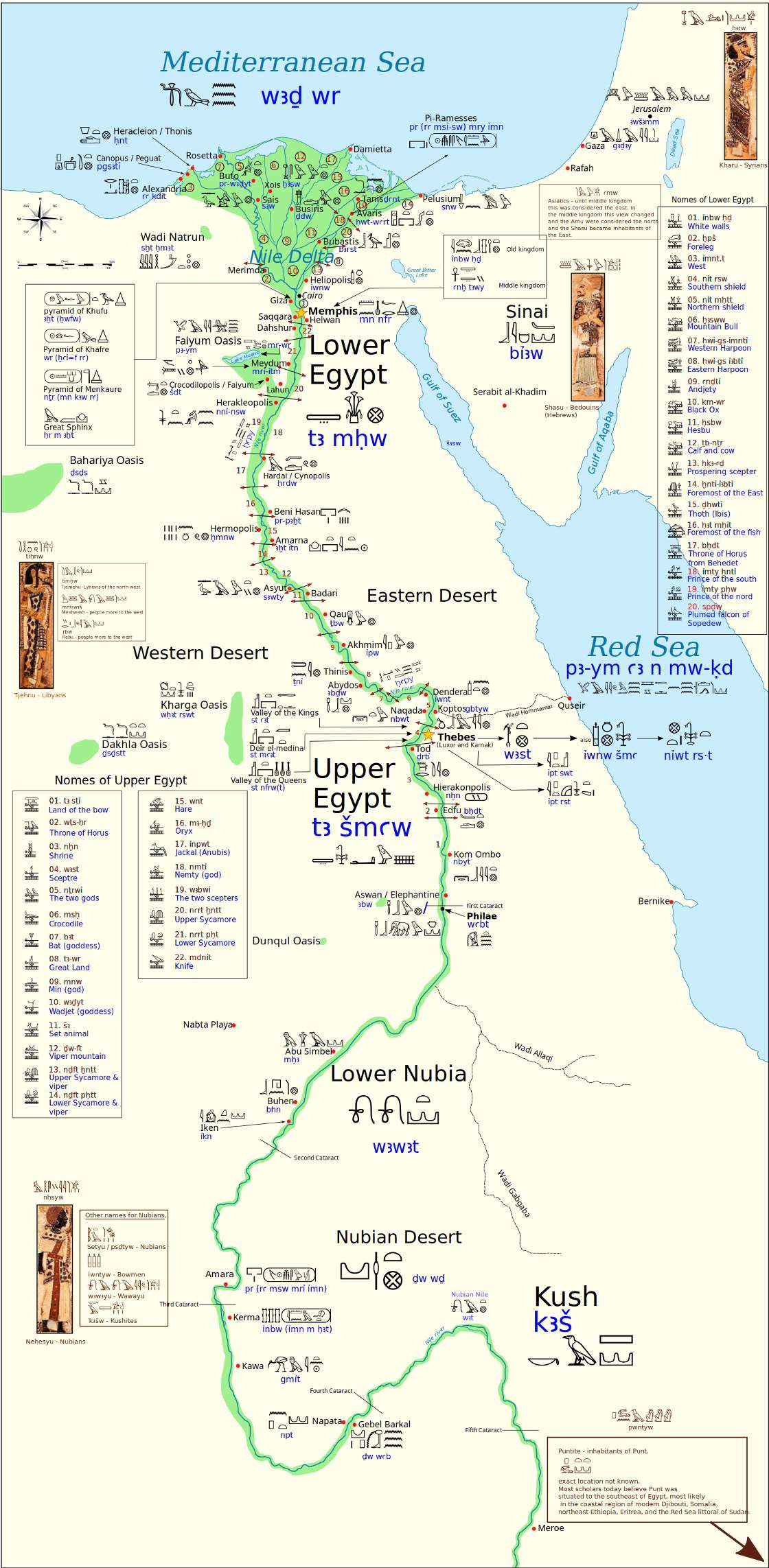 Larger version of this map.
Larger version of this map.Map 2 - Perhaps most of these places can't be located today because they are not even in Sinai peninsula?
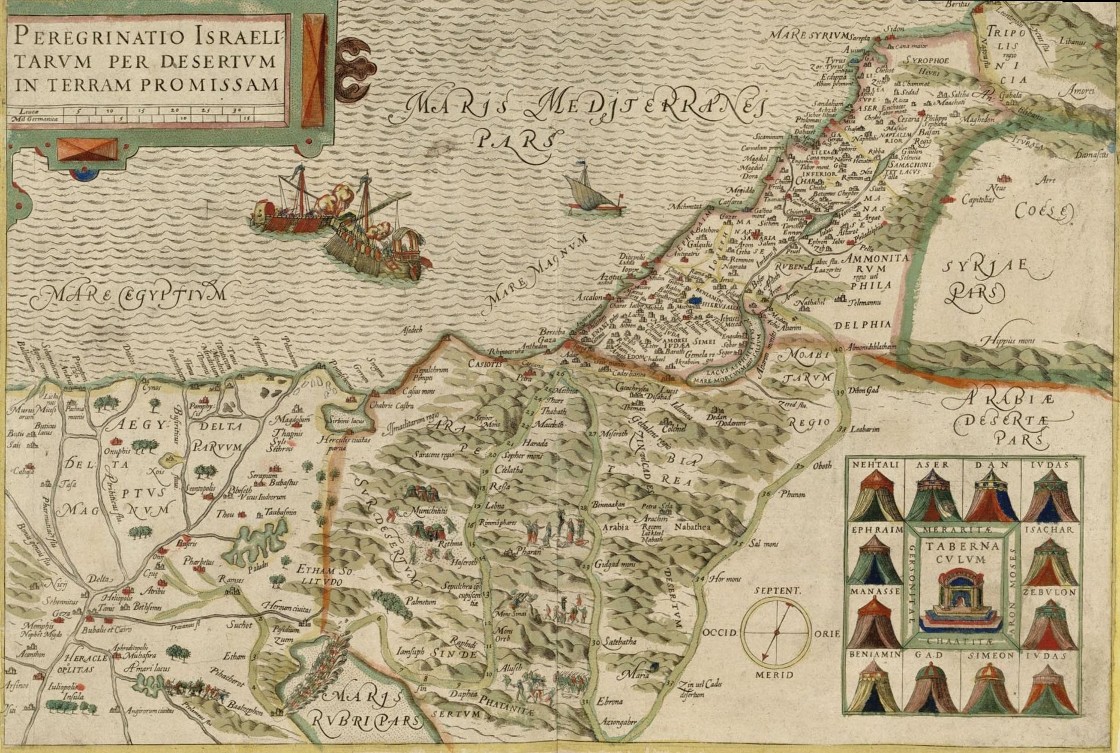
Map 3 - A more realistic "quesstimate" can be seen below! Note that the route to promised land marked on this map can be walked in about a week - yet it took Israel over 50 times longer. Why is that? Also note that it took them over a year to get close enough to the promised land, that they could send 12 spies to scout it. If it took them over a year to cross what is now called "Sinai" they were the slowest group in the history of history. This most likely means that the trip was "much" longer than depicted in these maps. It is unlikely that this map is any more accurate than the map above. Truth is we don't know where the places that were called Horeb or Sinai were 3500 years ago. We do know that mount Sinai and Mount Horeb were "smoking" so they were most likely volcanic mountains. There have never been volcanic mountains in what is now called Sinai Peninsula. Interestingly Jebel Marra's eruption in Sudan and Harrat Rahat's eruption in Arabia was almost exactly 3500 years ago at the time of Exodus from Egypt. Quite a coincidence.
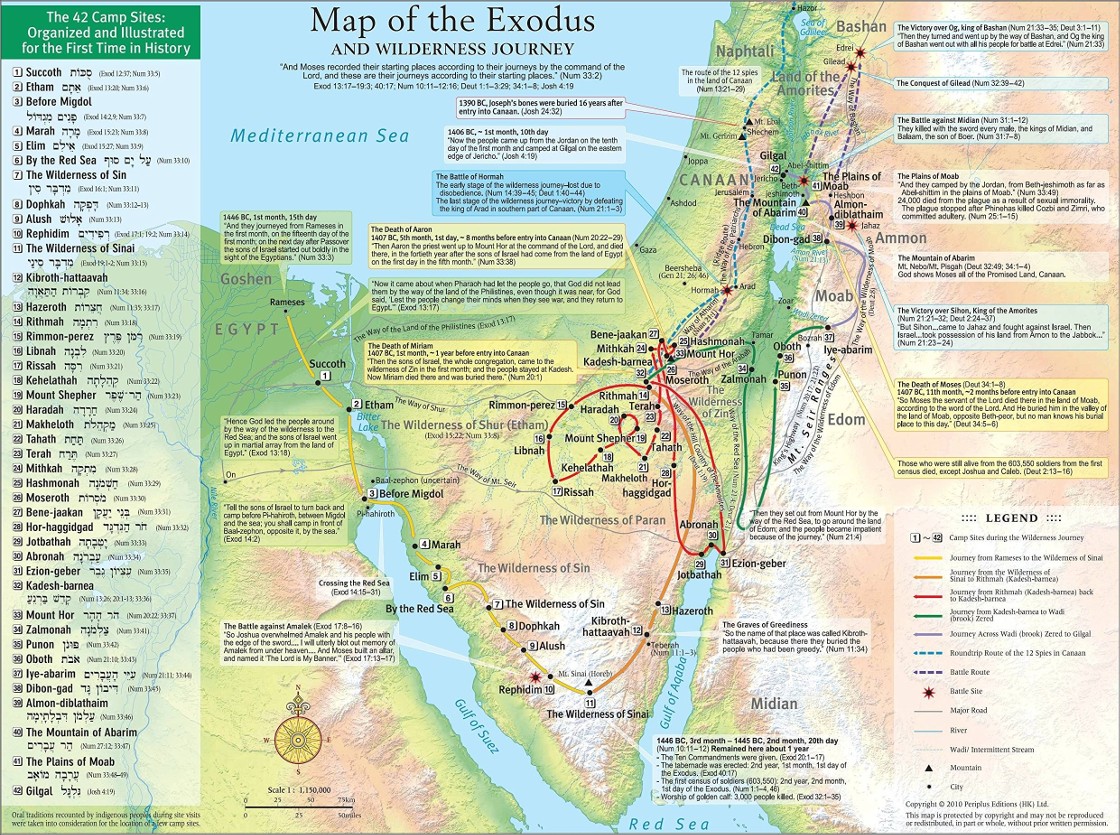
Map 4 - Much more realistic route with several confirmed fixed locations.

Stage 7. Literally "sea of reeds." Al (yam) SUPP did not refer to "Red" Sea but to the massive "reed" filled swamp that is still called Al Supp/Sudd.
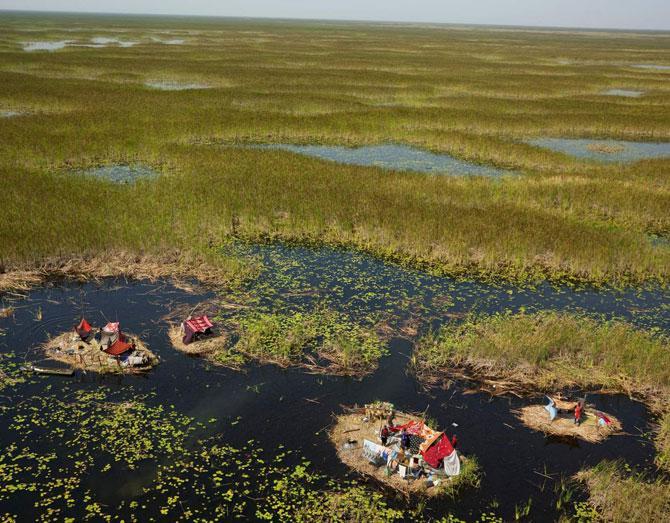
Map 5 - Good place to graze your sheep? Volcanic mountain (range) "Marra" aka "Bitter Water" on a map near Khartum in Sudan. Last active 3500 years ago.
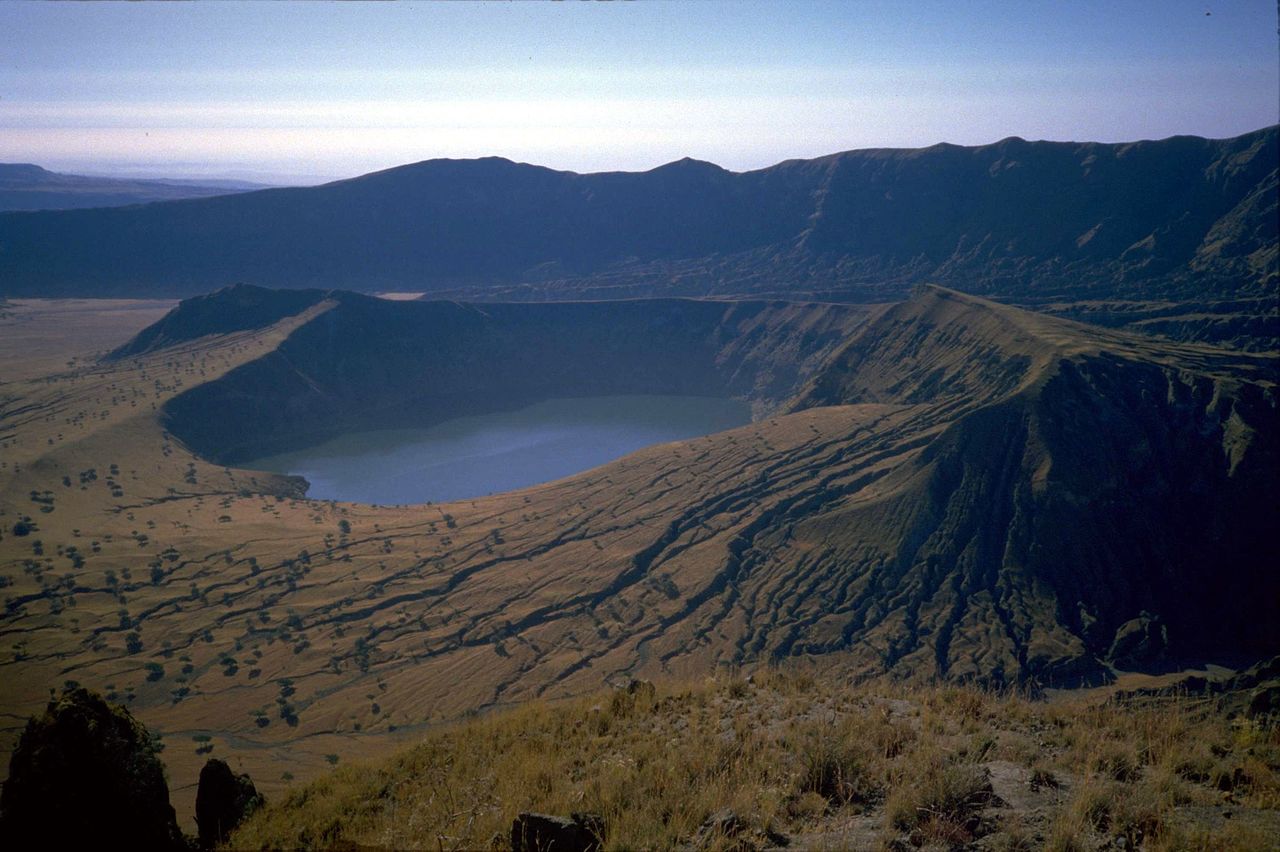
Map 6 - Good place to graze your sheep? Non Volcanic mountain range in Egypt (not Arabia) called Sinai. Last active - never.
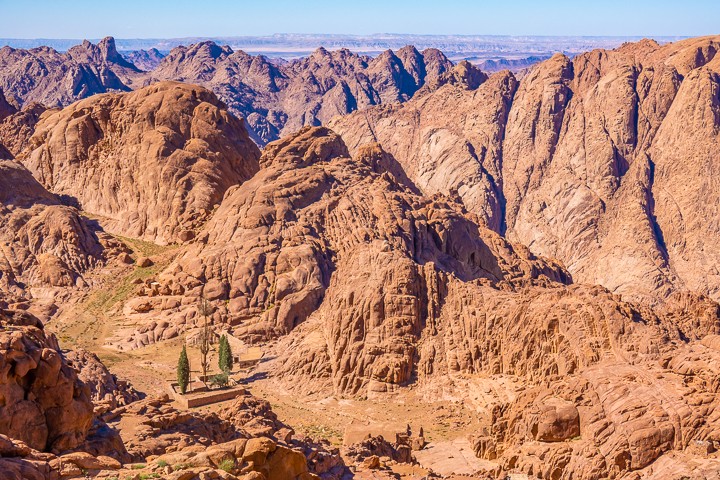
Map 7 - Volcanic mountain range by road Hagar in Arabia not called Sinai anymore. Active around ~3500 years ago.
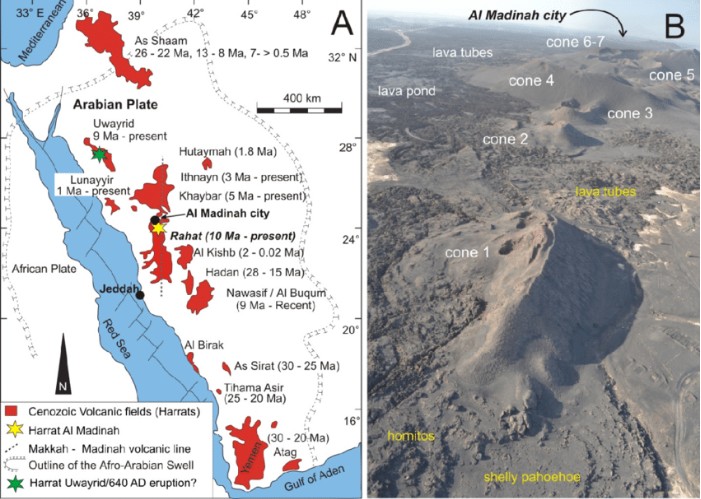
Map 8 - The reason why Jews (and Christians) had to "move" Mount Sinai.
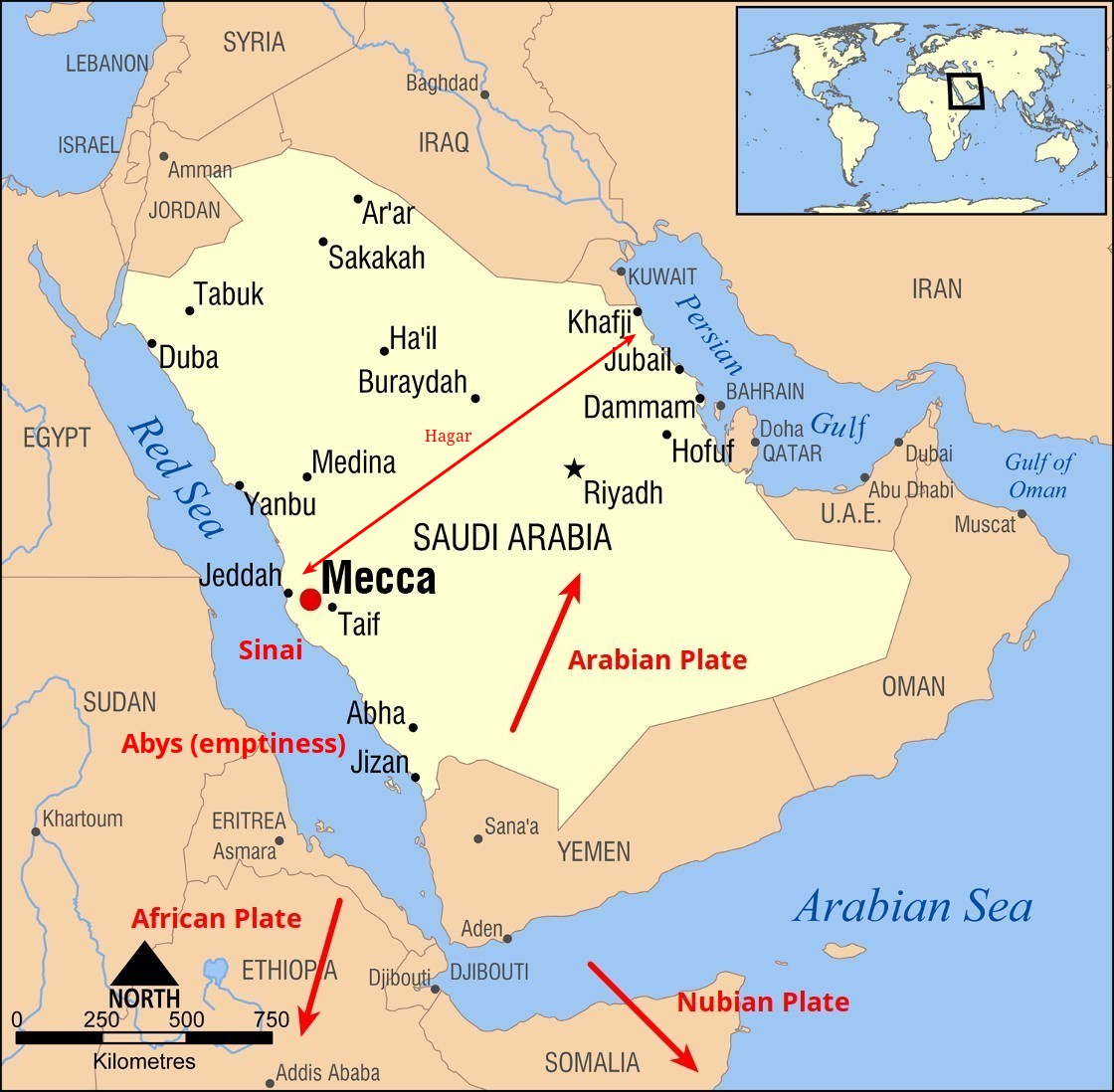
Sami Mattila (2023)
I have spent several years putting this together. Treat it with respect.